You will receive an email containing a link allowing you to reset your password to a new preferred one.
Verification mail has been sent.
Please check your mail to verify your account.
Click Here to Login
- How To Reach
- Dates & Price

27°42'14.7"N 88°08'51.4"E
- Kanchenjunga Base Camp Trek

April-May, Sept-Oct
Yuksom, Sikkim

Pickup Point
Bagdogra Airport, Siliguri
Minimum Age
- The trek gives you unmatched views of the majestic Mt. Kanchendzonga, rising up in entirety.
- Follow the popular Goechala trail, winding through dense alpine forests, home to countless floral species.
The Kanchenjunga Base Camp Trek is a doorway to the third highest mountain in the world, and the highest mountain in India, and offers a once in a lifetime glimpse at the mighty Himalayan giant up close. Feel the entanglements of your heart fade away as you witness that first ray of sunlight bathing the peak in a golden hue. Tracing the path to the famous Goecha La Pass, the trail to Kanchenjunga Base Camp winds through pristine alpine forests carpeted by blooming rhododendrons, orchids and other beautiful floral species. Climbing up to over 5,000 meters, the trek exposes you to some extreme temperatures and tricky sections to traverse, but the rewards are worth all the efforts you take. Unfurling under the unwavering gaze of Mt. Kanchenjunga, the Kanchenjunga Base Camp trek is on the top of every trekker's bucket list, as it should be. Come, take a few days off from the maddening monotony of life, and rediscover yourself amidst the sweeping realm of the Himalayas.
Brief Itinerary
Detailed itinerary, day 1 : reaching yuksom, day 2 : trek from yuksom to bakhim, day 3 : trek from bakhim to phedang, day 4 : trek from phedang to dzongri, day 5 : acclimatisation day at dzongri; excursion to laxmi pokhari, day 6 : trek from dzongri to bikhbari, day 7 : acclimatisation day; excursion to chaurikhang & rathong glacier, day 8 : trek from bikhbari to bakhim, day 9 : trek from bakhim to yuksom, day 10 : drive from yuksom to siliguri.
We can arrange a cab for you from the pickup point in Siliguri/NJP/Bagdogra Airport, the charges for the same are not included in the package. The cost of the cab can be shared among the trekkers joining the trek. For communications purposes, we will create a Whatsapp Group before the departure date of the trek and will share the details regarding the transportation. The drop at Siliguri after the trek will be arranged in a similar way.
How to reach Kanchenjunga Base camp Trek Starting Point (Yuksom) :
Bagdogra Airport is the nearest airport, from here you can take a taxi/bus to Yuksom. If you are a large group then a minivan or a minibus can be arranged easily.
New Jalpaiguri Station located at a distance of 150 km from Yuksom, from the station you can take taxi/bus to Yuksom.
Latest Stories
Why trek with us .
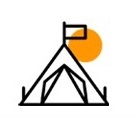
Fixed Departures All
Get yourself fit, nutrition tips, things to take, health & safety.
- Accommodations at Trek: All accommodations on the trek will be on twin sharing basis in Tents or Homestays. Any accommodation in a hotel/guest house/hostel will be in a budget hotel.
- Trek Leader and Guides: An experienced and certified Trek Leader , as well as a professional guide, will accompany you for the trek. The team will have years of experience and well equipped for any emergency situation.
- Services of a Professional Trekking Team: A team of an experienced Cook, Camp Staff, Porters/Mules will accompany you for all the arrangements on the trek .
- Meals: All Meals on the Trek are included. We will serve Vegetarian Indian food on the trek which will be cooked by our high altitude chefs. It will be a five-course meal plan.
- Camping and Safety Equipment: All the camping equipment such as Tents, Sleeping bags, Toilet Tents, Dining Tent, Mattresses, and other things will be provided by us and we guarantee the quality. Safety Equipment including Medical kit, Oxygen Cylinder, Oximeter, Crampons & Gaiters(if required) will be provided by us. We recommend you to bring your own sleeping bags if possible.
- Trek Permits and Forest Camping Charges: Only for Indian Clients, All the applicable trekking permits, Camping Charges, Forest Entry Fee, etc will be paid by us. Foreigners have to pay these charges if not mentioned.
- A Life-Changing Experience: We assure you that by trekking in the Himalayas you will have a life-changing experience and we will do everything we can to provide you with the best services and make your venture in the wild an unforgettable one.
Note: Prior to booking any adventure with Trekmunk, it will be mandatory to sign the waiver form and get a medical certificate from a doctor in due time, without these, you will not be allowed to start the trek. All this will be done online without using any paper.
- GST and Other Taxes: The goods and services tax is not included in the price mentioned with the trek. They are subjected to change according to the government rules of India.
- Accommodation and Food in Siliguri: Food and stay in Siliguri is not included in the package.
- Flights and Transportation to and fro base camp: Flights or other means of transport are not included in the package. Transportation from Siliguri to Yuksom and back to Siliguri is not included in the package . We can arrange a cab for you according to your requirements but you will be liable to pay for the same. Any expenses occurred during the journey are not included in the package cost.
- Personal Equipment: Your Rucksack, personal clothing, shoes, trek poles, and other personal trekking gear is not included in this package. You have to bring your own gear according to the weather and difficulty of the trek.
- Portage of Personal Bags(Offloading): We highly advise you to carry your own burden (your rucksack) but due to any reason, if you wish to not carry your rucksack, we can arrange for a porter/mule to carry it. For this service, you will be charged over and above the trek cost. The charges for offloading vary with every trek.
- Travel Insurance: Travel Insurance is not included in this package. We recommend you to have travel insurance before opting for such adventures. You can buy insurance from us while booking the trek, it is optional.
- Personal Expenses: Any personal expenses incurred (Laundry, Bottled Water, Beverages, Snacks, Orders at tea houses or dhabas, Tips for guides, Camera fees, etc) are not included in the package.
- Emergency Expenses: Any costs arising out of unforeseen circumstances such as accidents, bad weather, landslides, road conditions and any other circumstances beyond our control are not included in the package.
- Anything not mentioned in Inclusions of the package.
Cancellation Policy And More Information
Booking terms:, confirmation policy:.
Upon Booking, An invoice will be sent to your mail & within 12 to 24 hours the booking confirmation with additional details will be sent to your mail.
Cancellation Policy:
This image is only a brief visual representation of the policy.
Please read the detailed policy carefully by clicking on this text.
_1655191763393.jpg)
Refund Policy:
Any refund applicable will be processed within 10 to 15 business days as per the company policy.
Postpone/Transfer of a booked trek:
a) You can postpone your booked trek for a period of two months (61 days) but Trekmunk will charge a 20% processing fee. The last date for the postponement will be 15 days before the start of the trek. You can book any slot for the same trek in the next 2 months (61 days) which will totally depend on the availability. You will have to confirm your slot for your future trek 15 days prior to that trek. Failing to book the slot in 2 months (61 days) time, would be considered a cancellation with no refund of any kind. The 2 months (61 days) time frame will be from the start date of the initial trek you booked for. Postponing a booked trek can only be done once. If it is postponed 45 days before the departure date, we will not charge any fee.
b) You can transfer your booked slot for the trek to any fit person till 15 days before the trek. You just have to mail us the request and rest we will handle. The new person has to get all the mandatory documents duly signed for the trek and is bound with this booking contract. It is the participant's responsibility to read and agree to all these terms.
More Information:
1. We Trek for a Cause: For overall development of the areas we run our operations in, we donate Rs 100/- per booking from our profits which are used for the upliftment of the local people and conserving nature. We have named this initiative as - Trek for a Cause. For more details, follow: https://www.trekmunk.com/trek-for-a-cause
2. We are paperless: We are focusing on Sustainable Tourism and to do that we are trying all measures to convert our trek operations to be Eco-Friendly. Going Paperless is one step closer to our aim.
3. Single-Use Plastic: Trekmunk does not encourage the use of single-use plastic items. We are ensuring that our team is working together to reduce the problem and educate those around them. We will send you instructions on how to go plastic-free on your adventures.
4. Preparing for your Holiday: Getting some additional exercise makes a lot of sense to spend time before coming on a trekking adventure. The fitter you are, the more enjoyable you will find the experience. Hiking in the hill country is the best training but jogging, squash and swimming are also good for developing cardiovascular fitness and stamina. To read more on how to get fit, follow: https://www.trekmunk.com/get-fit-for-trek
5. Electricity Supply & Plug: You will get electricity supply till the starting point of the trek. If not Indian, We recommend you check if you require an adaptor for your electrical items at: http://www.worldstandards.eu/electricity/plugs-and-sockets/
6. Currency: The unit of currency in India is the Indian Rupees.
7. Health & Vaccinations:
Severe Allergies: If you have a severe allergy please inform the Trekmunk office before you travel. We will do all we can to help, but we cannot guarantee an allergy-free environment on trekmunk trips. You will need to carry your own treatment for the allergy with you, as 'adrenaline auto-injectors' are not carried as standard by our leaders and staff. You should inform your leader on the arrival of your allergy, and let them know where you keep your adrenaline pen.
Vaccinations: You should contact your doctor or travel clinic to check whether you require any specific vaccinations or other preventive measures. You should be up to date with routine courses and boosters as recommended e.g. diphtheria-tetanus-polio and measles-mumps-rubella, along with hepatitis A and typhoid. Malarial prophylaxis is not usually required for trips in the mountains, however, if you are visiting rural and remote low lying areas then they might be necessary.
8. Passport & Visas/Identity Proofs: If foreigner, Validity for 6 months, should have blank pages, and should be kept with yourself all the time.
9. Water: If you are on a trekking or cycling holiday, water is supplied to fill up your individual bottles. This will be boiled or filtered. Additionally, you should take purification tablets or a filter bottle (such as a LifeStraw, Sawyer Filter) to treat your water when in towns or where water is not supplied. We do not encourage the purchasing of single-use plastic bottles.
10. Altitude: This adventure involves going to a very high altitude. This is not something that you should worry about; the human body is quite capable of adapting to a very wide range of altitudes, but it is important that we follow some simple rules in order to acclimatize successfully. We will send you the information in your mailbox about Acute Mountain Sickness and trekking in high altitudes. On this trip, we carry bottled oxygen for use in emergencies.
11. Guidance on Tipping: Tipping is the accepted way of saying thank you for good service. Normally the guide and any other trek staff are given their tips at the end of the trek and this is best done as a group. The main guide will make sure that the tip is appropriately distributed among all the staff members on the trek.
12. Spending/Emergency Money: Approximately Rs. 8000-10000/- (in Indian Currency)should be carried for miscellaneous expenses including porter and trek crew tips, drinks, soft drinks, etc. We recommend that you carry your travel money in the form of cash as the availability of ATM is less in these remote areas. This can also serve as your emergency spending money.
13. Travel Insurance: It is recommended to have travel insurance for these kinds of adventures. When taking out insurance please ensure the policy you choose covers you for the activities and altitude included in your itinerary. We will ask for the Travel Insurance Details over a mail. Indians can buy insurance from us while booking the trek.
Our 7 days trip to Meghalaya was a truly memorable experience. Thank you Trekmunk for arranging such an adventurous backpacking trip and a special thanks to Mohit Goswami our trip leader for giving us an experience of what true travelling is. From hitchhiking to traversing the un ...
We were a group of 12 friends and booked a trek to Kedartal with Trekmunk, it was an amazing experience..even though it was our first trek to the Himalayas and Kedartal being a difficult terrain trek we were guided excellently by the Trekmunk team. They served us nutritious food, ...
No words for the bike trip from Srinagar to Leh. One should experience it to feel it and all this because of the management of Trekmunk especially Mohit and Harshit whose efforts even made the hardest of the ride exciting adventurous and above all safe. Although some hindrances w ...
Our 7 days trip to Meghalaya was a truly memorable experience. Thank you Trekmunk for arranging such an adventurous backpacking trip and a special thanks to Mohit Goswami our trip leader for giving us an experience of what true travelling is. From hitchhiking to traversing the unknown places to eating delicious Momo's to climbing 3000 steps, we did it all in those 7 days which came to end so quickly and none of us wanted to go back home. Such an experience where you just pick up your rucksacks and walk down the roads of a traveller could have been only possible because of Trekmunk!
We were a group of 12 friends and booked a trek to Kedartal with Trekmunk, it was an amazing experience..even though it was our first trek to the Himalayas and Kedartal being a difficult terrain trek we were guided excellently by the Trekmunk team. They served us nutritious food, took complete care of our safety and health and gave us the right advice to overcome AMS. Eagerly awaiting our next trek with them.
No words for the bike trip from Srinagar to Leh. One should experience it to feel it and all this because of the management of Trekmunk especially Mohit and Harshit whose efforts even made the hardest of the ride exciting adventurous and above all safe. Although some hindrances which are quite common like bike issues and medical problems arose with our co-riders, I liked the way these two guys handled it dexterously. I went with one of my best friends and came with a lot more and the trip turned out to be memories that can be cherished for a lifetime. Thanks, Team Trekmunk for giving me a wonderful experience. I can't wait to go on my next adventure with them.
I was bored with my regular 9 to 5 schedule and then I decided to seclude myself from the chaotic city life. So, I went to Brahmatal trek last month along with a couple of my friends. We went with Trekmunk and it was a lovely experience. The trek guide, Ramesh was very polite and helpful. The food and snacks were amazing. The activities in the campsite during our overnight stay is something that I am gonna cherish my entire life. I am waiting for my next trek with Trekmunk.
I chose (after a lot of research) Trekmunk for my first trek - The Hampta Pass and Chandratal Trek. And I am so really glad I did so. The trekker needs to only focus on the trek and the beautiful landscape around him/her. The rest of everything is taken care of by Trekmunk from day 1 till the end of the trek. Scrupulously managed logistics; no compromise on safety and security; experienced, intelligent and knowledgeable trek leaders; scrumptious meals; contingency and backup plans; etc. make Trekmunk an ideal choice to go trekking with. My trek was lead by Ashish Pathania, Prashant Reddy and Sanjay Thakur. The three are were thorough professionals. They were jolly, very helpful, experienced, knowledgeable, organized, and needless to say polite yet strict when needed. They played the most important roles in making sure our overall trekking experience was a wonderful one. Thank you Trekmunk for one of the most beautiful experiences I have had till date. Will see you guys soon.

Related Blogs
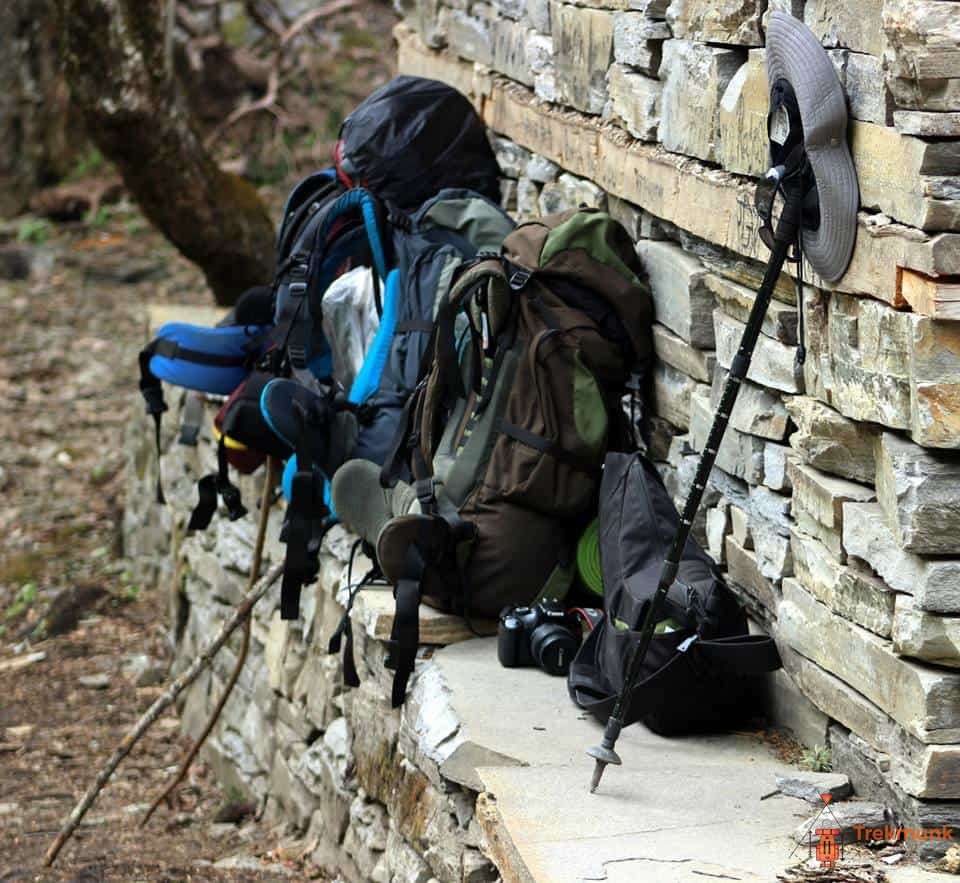
Related Tours

Goechala Trek
Kanchenjunga round trek.

Sandakphu & Phalut Trek

Singalila Ridge Trek

"Trekmunk is changing the indian trekking industry"
"10 Most Promising Adventure Sporting and Trekking Companies - 2020"
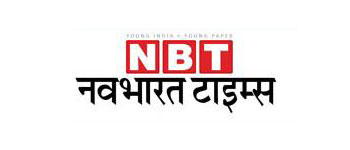
" Things you do for the Passion for Travel"
Hello there, How can we help you ?
Timing: 10 am to 6 pm IST (GMT +5:30)
Whats App Us
- The Ultimate Guide to Kanchenjunga Circuit Trek
- Kanchenjunga Trek
- 08/05/2023 04/04/2024
If you’re seeking a challenging and rewarding trek, the Kanchenjunga Circuit Trek could be the perfect choice. This magnificent journey will lead you through the breathtaking landscapes of Nepal’s Kanchenjunga region, providing awe-inspiring views of the world’s third-tallest mountain. However, preparing and knowing what to anticipate is essential before embarking on this adventure. This comprehensive guide to the Kanchenjunga Circuit Trek will provide all the necessary information to ensure your experience is as enjoyable and fulfilling as possible.
The Kanchenjunga Trek is a spectacular trekking experience that guides you through East Nepal’s most impressive landscapes. It’s known as one of the best trekking experiences in the world and offers incredible vistas, fascinating villages, and tremendous cultural diversity.
The Kanchenjunga Circuit Trek refers to visiting both North and South Kanchenjunga Base Camps so that tourists of the 3rd highest mountain and the greatest massif in the world can be close to the top and get up close and personal.
The Kanchenjunga Trek is one of the most challenging treks in the Himalayas. It takes place mainly in the mountains of Nepal and India and involves traversing three mountain ranges – the Kanchenjunga massif, the Kumbhakarna range, and the Yalung. Throughout this guide to Kanchenjunga Circuit Trek , you’ll find all the information you need to make your journey one to remember.
Table of contents
Kanchenjunga circuit trek – getting there and away, trekking into the kanchenjunga conservation area, what to expect, routes and itineraries for the kanchenjunga trek, kanchenjunga south base camp trek itinerary, itinerary for kanchenjunga base camp trek (north to south base camp), kanchenjunga circuit trek map, the altitude of kanchenjunga base camp trek, kanchenjunga circuit trek permits, best time to go to kanchenjunga circuit trek, food & accommodation on the trek, kanchenjunga circuit trek difficulty, packing list for kanchenjunga base camp trek.
There are many ways to get from Kathmandu to the beginning of this trek. You could alter your itinerary based on what you have on your travel list and availability. Flights are typically available from Kathmandu to Bhadrapur.
From there, you can fly or drive to Suketar Airport near Taplejung. It’s the best way to get from Kathmandu to Taplejung. In addition, Tara Air, Summit Air, and Nepal Airlines often schedule charter flights.
The Kanchenjunga Conservation Area (KCA) is spread over 2035 square kilometers and is one of the first places to explore the Himalayas. So, Kanchenjunga Circuit Trek offers an opportunity to discover the less traveled Himalayan routes.
It presents contrasting ecosystems, varying between alpine grasslands and subtropical forests—from the down-valley of rivers to the glacial moraine with rugged slopes.
The area is home to plenty of vegetation, wildlife, and numerous animals such as the musk deer, black bear of the Himalayas, snow leopards, boar, red panda, and many more. You can see the spectacular mountain panorama, taste local food, and observe Rai, the Limbu, and their culture.
So you’re finally ready for an adventure. You’ve researched, planned, and trained and are prepared to conquer the Kanchenjunga circuit trek in the Nepal Himalayas!
What do you need to know? What are the top five things you should know before you go?
Here’s a short list of what to expect based on what we’ve done to prepare ourselves for the trek:
- Expect it to be challenging. There will be a lot of hills, a lot of climbing, and a lot of scrambling. It won’t be easy, but you will feel good and strong once you start.
- Expect it to be cold. While there’s no snow, it gets cold, and the nights can be freezing. Bring warm clothes, layers, and wool socks. You can always add a sleeping bag if you want to, but remember that the weather can be unpredictable, so you may need to leave it at home.
- Expect to get sick. You may contact the stomach bug or worse. It’s happened to a few people. So be prepared, and don’t put yourself in a position where you’ll likely get sick.
- Expect to be challenged. You’ll feel challenged, and you’ll need to overcome obstacles. But, of course, you won’t be able to avoid challenges, and that’s part of the fun.
- Expect to be inspired. Beautiful, inspiring mountains surround you.
The Kanchenjunga Circuit Trek offers a variety of routes, each with a different level of difficulty and duration. Options include the 7-day Pangpema Trek that takes you to the Kanchenjunga North Base Camp and offers incredible views of the gigantic mountains.
Finally, for those looking for something longer, the 17-day Mt. Kanchenjunga Base Camp trek will take you to Yalung Base Camp or the Jannu Base Camps to explore two sides of one mountain!
The peaks of the Himalayas are visible from many parts of the hike. During the trek, you will be treated to stunning views of the spectacular Himalayas.
So, how do you plan for your Kanchenjunga Base Camp Trek ? Have you visited Kanchenjunga North Base Camp or Kanchenjunga South Base Camp Trek ? If you want to go for the views of the mountains, then you should go to the Kanchenjunga Circuit Trek.
This trek is a once-in-a-lifetime experience, and it would be a shame to miss out on such a trek for the views. However, if you have limited time and resources, consider opting for the Kanchenjunga North Base Camp . This way, you will enjoy the magnificent views and be back in time for the last day of your trek.
There are several maps available for the Kanchenjunga Circuit Trekking. You may purchase the Kanchenjunga Circuit Trek map in Thamel or buy it online with Amazon.
But we will provide the Kanchenjunga Circuit Trek map while you travel with us. Here is the GPS coordinate to navigate the daily walking distance and other essential information.
The below graph shows an elevation profile for the Kanchenjunga Base Camp Trek. The name position on the horizontal axis indicates the usual progression of a trek with the extreme ends on the route.
Before embarking on the Kanchenjunga Circuit Trekking, obtaining the necessary permits and paying the required fees is mandatory. You will need a Restricted Area Permit (RAP) and a Kanchenjunga Conservation Area Permit (KCAP) to enter the region.
The RAP costs USD 10 per person per week, while the KCAP costs USD 20 per week. Additionally, you will need to hire a licensed guide and porter, which can cost around USD 25-30 per day. Remember that these fees are subject to change, so it’s best to check with a local trekking agency for the most up-to-date information.
Featured Trip
Kanchenjunga base camp trek, kanchenjunga south base camp trek.
We want to tell you the best time to visit the Kanchenjunga circuit trek . If you are considering doing the tour, please know that you can do this at different times of the year. It is always a good idea to plan around autumn, generally from October to November. The trek is long, so you’ll have to allow plenty of time to complete it.
The trek is best when the weather is not too hot or cold; this is when people are least likely to be sick. It would help if you did the trek when it is not raining and, ideally, without wind. If you plan to do the tour during monsoon season, you should expect to encounter heavy rain.
The Kanchenjunga trek is an adventure, and you should not come with a set itinerary and expect the expedition to unfold as you planned. An excellent trekking guide can make the experience much more exciting and fun, so take one if you want to enjoy yourself fully.
To understand what the Kanchenjunga region offers, consider early March through mid-May and mid-October to late November. Generally, the monsoon season runs from late May to late September, making trekking impossible.
In recent years, trekking has become much more comfortable. Travelers in those days had to bring everything from food to tents.
Kanchenjunga is now a teahouse trek in northeast Nepal, as basic hut accommodation on the way has grown relatively recently. It may not be as easy as on the other famous Nepalese routes, but it will take a hot cup of tea and a sunset in the mountains at the end of the day.
You have no alternative or preference for accommodation while hiking. There is no toilet in the tea houses in Lhonak, Sele Le, and Ramche.
It is available simple food in Kanchenjunga. Daal Bhat, thukpa, chowmein, and instant noodles are the most common foods. But Macaroni and pasta are available in a few places.
The elevations spread from 200 meters to 5,175 meters in the Kanchenjunga Trek. Following a few rules, the Kanchenjunga Base Camp Trek is NOT DIFFICULT. Previous trekking experience or any mountaineering skills are optional. AMS (Acute Mountain Sickness) and the extreme, unpredictable climate are the major issues of every trek.
Kanchenjunga is a beautiful trek with a tea house and basic accommodations. Nevertheless, the services are fundamental. Bringing the correct clothing and equipment while trekking in the Kanchenjunga region is crucial. Appropriate clothing and supplies are essential for a safe and enjoyable trek.
You can sometimes spoil your trip with under-packaging or over-packaging. So, before you take your first trekking trip, let me share with you what you need to pack and what to avoid.
First things, what kind of gear should you bring? Let me introduce you to your ideal hiking equipment:
Hiking shoes: You may have the right hiking shoes for you. But you don’t. The best hiking shoes are called boots and have rigid, flexible soles.
Water bottle: Every trekker needs a water bottle. Please feel free to bring your own, or choose wisely. There are so many good options out there.
Extra clothes: When hiking, you are bound to get cold. Bring extra clothes and wear layers. Don’t forget to bring sunblock, a hat, a sweater, and socks.
Hiking poles are light and easy to carry, and you must have them while trekking.
Money: I know you don’t want to lug around a heavy backpack with you, but you still need money. So I recommend carrying a small amount of cash.
First aid kit: A first aid kit on your trek is essential. You never know when you will get injured or sick, so you must be prepared.
The cost of permits for the Kanchenjunga Trek is 1. Kanchenjunga’s restricted Area Permit cost is US$ 20 per week for the first four weeks. 2. Kanchenjunga Conservation Area Entry fee NPR 3000 per person
It depends on the chosen routes and whether you wish to do an entire Kanchenjunga Circuit Trekking; then, it will be demanding. Likewise, deciding on the Kanchenjunga South Base Camp Trek is easy to moderate, although you should walk 5 to 8 hours daily. This complete guide to Kanchenjunga South Base Camp Trek will help you plan and prepare for this adventure.
I need help putting a price on since you need to consider how much you will spend to reach the highest spot in the world and back, and then the price of your food and accommodation. However, the base cost for this trek should be around USD 2660 for the whole circuit. Including the flights to and from Kathmandu, there are some different options that you can choose from to make this trek cheaper and more manageable.
Mt. Kanchenjunga is one of the most pleasurable trekking destinations in Nepal on the eastern border of Nepal and is ideal for people in need of astonishment and who have time to travel here. But, unfortunately, the campsites were only accessible in the past.
But basic tea houses are also available for specific periods. In addition, more inexpensive routes pass through spectacular Himalayan vistas, ancient forests, prime wildlife, and the core of traditional cultures and communities.
The best guide to Kanchenjunga Circuit Trek will help you prepare for your travel adventures, such as packing, planning, and preparing your luggage, health, vaccinations, permits, itineraries, and more.
For adventure seekers looking for a challenge beyond what they have experienced before, Kanchenjunga Circuit Trek is worth considering due to its unique combination of natural beauty and cultural exploration opportunities throughout your journey.
Adding Kanchenjunga Circuit Trek to your bucket list will provide professionals with unforgettable memories and valuable insights into diverse cultures. This Kanchenjunga Trek offers something unique that no other trekking destination can offer! So take advantage of this opportunity for an incredible experience!
About Author
Leave a reply.
You must be logged in to post a comment.
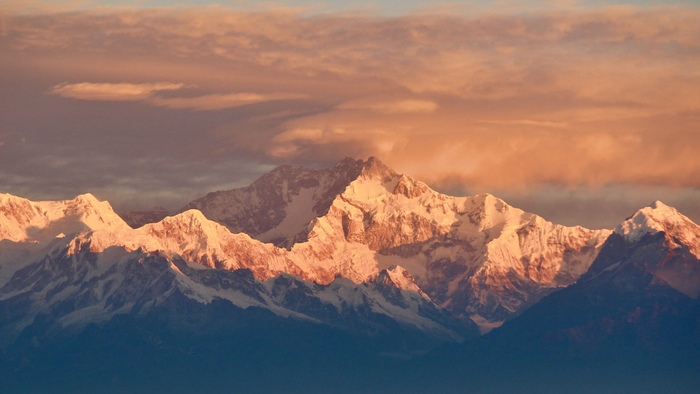
Kanchenjunga Circuit Trek: Detailed 22 Day Itinerary [2023]
- June 28, 2023
The Kanchenjunga Circuit trek is one of the best treks in Nepal , that takes you to both the north and south base camps of Kanchenjunga, the third highest peak in the world. As this trek explores a remote area, it is advisable to have a good level of fitness and some prior trekking experience. However, despite its seclusion, trekkers are rewarded with a look into the local way of life and have the opportunity to visit the serene Ramtang and Oktang Monasteries.
Along the trail, you’ll be surrounded by a breathtaking landscape adorned with meandering rivers, cascading waterfalls, lush green meadows, vibrant rhododendron forests, enchanting birch and pine woods, as well as the awe-inspiring Yalung Glacier. The magnificent mountains serve as constant companions throughout the journey.
This guide will give you the ins and outs of the Kanchenjunga Circuit Trek, as well as I detailed Ininerary for the 22 day trek!
Quick Facts About the Kanchenjunga Base Camp Trek
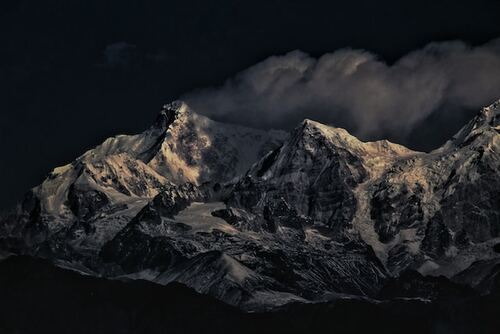
- Starting point: Taplejung
- Ending point: Khamdime
- Trek Region: Kanchenjunga
- Transportation: Flight
- Duration: 22 Days
- Trip Grade: Strenuous Difficulty
- Max Altitude: 5143 m / 16873 ft (Pangpema)
- Accommodation: Tea House
History of Kanchenjunga Circuit Trek
Situated on the far eastern side of Nepal, near the border with Sikkim, Kanchenjunga was once believed to be the highest peak in the world until the mid-1800s.
Initially closed off to trekkers, this region opened its doors in the mid-1980s. Today, it is safeguarded by the Kanchenjunga Conservation Area, and a special trekking permit is required. These restrictions have helped preserve the pristine condition of the area’s remarkable flora and fauna, making it a haven of natural beauty.
In addition to the towering Kanchenjunga, there are four subsidiary summits surpassing 8,000m, with Kanchenjunga West, also known as Yalung Kang (8,505m), being the most prominent. The region also boasts around twenty peaks surpassing 7,000m, including Kambachen (7,903m), Janu (7,710m), Jongsong (7,483m), Kabru (7,353m), Tent Peak (7,365m), and the Twins (7,350m).
Moreover, the area boasts numerous peaks exceeding 6,000m, along with five major glacial systems. While the Zumu, Talung, and Rathong glaciers flow into Sikkim, the Kanchenjunga and Yalung glaciers make their way into the mighty Tamor River of Nepal.
With the recent addition of the Great Himalayan Trail to the trekking map, tourism is gradually being promoted in this and other remote regions. This has led to the establishment of more tea houses along the route, benefiting local communities. However, now is an opportune time to visit Kanchenjunga before it becomes widely discovered by an increasing number of trekkers.
Kanchenjunga Circuit Trek: Day-By-Day Itinerary
Here is a quick outline for the Kanchenjunga Circuit Trek:
- Day 1: Depart Kathmandu for Bhadrapur (Flight) and continue to Ilam by road Ilam – 1677 m / 5501 ft – 5 hours
- Day 2: Drive from Ilam to Taplejung Taplejung – 1820 m / 5971 ft – 5 hours
- Day 3: Trek from Taplejung to Chirwa Chirwa – 1270 m / 4166 ft – 6 hours
- Day 4: Trek from Chirwa to Lelep Lelep – 1860 m / 6102 ft – 7 hours
- Day 5: Trek from Lelep to Amjilosa Amjilosa – 2510 m / 8234 ft – 5 hours
- Day 6: Trek from Amjilosa to Gyabla Gyabla – 2730 m / 8956 ft – 4 hours
- Day 7: Trek from Gyabla to Ghunsa Ghunsa – 3595 m / 11794 ft – 4 hours
- Day 8: Acclimatization day in Ghunsa Ghunsa – 3595 m / 11794 ft – 4 hours
- Day 9: Trek from Ghunsa to Kambachen Kambachen – 4100 m / 13451 ft – 4 hours
- Day 10: Acclimatization day in Kambachen Kambachen – 4100 m / 13451 ft – 4 hours
- Day 11: Trek from Kambachen to Lhonak Lhonak – 4785 m / 15698 ft – 4 hours
- Day 12: Day trip to Kanchenjunga North Base Camp from Lhonak Lhonak – 4785 m / 15698 ft – 8 hours
- Day 13: Trek from Lhonak to Ghunsa Ghunsa – 3595 m / 11794 ft – 7 hours
- Day 14: Trek from Ghunsa to Sele Le Sele Le – 4390 m / 14402 ft – 5 hours
- Day 15: Trek from Sele Le to Cheram Cheram – 3870 m / 12696 ft – 8 hours
- Day 16: Day trip to Kanchenjunga South Base Camp from Cheram Cheram – 3870 m / 12696 ft – 6 hours
- Day 17: Trek from Cheram to Torongding Torongding – 2080 m / 6824 ft – 4 hours
- Day 18: Trek from Torongding to Yamphuding Yamphuding – 1980 m / 6496 ft – 8 hours
- Day 19: Trek from Yamphuding to Khebang Khebang – 1910 m / 6266 ft – 4 hours
- Day 20: Trek from Khebang to Khamdime Khamdime – 1500 m / 4921 ft – 4 hours
- Day 21: Drive from Khamdime to Bhadrapur Bhadrapur – 93 m / 305 ft – 10 hours
- Day 22: Fly from Bhadrapur to Kathmandu
Brief Itinerary For The Kanchenjunga Circuit Trek
In order to assist you in organizing your adventure, we have an itinerary that outlines each of the 22 days you will be on this extraordinary trek.
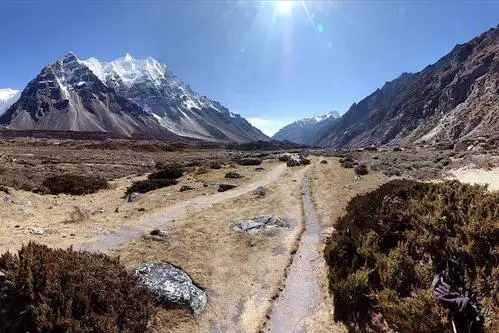
Day 1: Kathmandu to Bhadrapur (Flight) then drive to Ilam
Day 2: ilam to taplejung (drive).
Trek time: 4 to 5 hours
You will start a scenic 4-hour drive through enchanting terraced fields and rolling hills to reach Taplejung. Upon arrival, you can explore the town and its fascinating Buddhist gompas. One of these gompas is renowned for its butter lamps that have been continuously burning for over 400 years.
Day 3: Taplejung to Chirwa
Trek time: 5 to 6 hours
Day 3 marks the beginning of the trek. It’s a long day of predominantly downhill hiking, with a chance to catch your breath at Sinwa village nestled alongside the Tamor River.
Day 4: Chirwa to Lelep
Trek time: 6 to 7 hours
Prepare for another lengthy day of trekking, approximately 7 hours in total. As you pass through Tapethok, you will enter the Kanchenjunga Conservation Area. Here, permits are checked before crossing a suspension bridge and ascending to the village of Lelep.
Day 5: Lelep to Amjilosa
Trek time: 5 hours
From Lelep to Amjilosa, the trek takes approximately 5 hours. The trail is adorned with numerous waterfalls and suspension bridges, creating a picturesque and almost fairy-tail like environment. Along the way, trekkers encounter the first Sherpa village of the journey, Amjilosa. Although this village is primarily inhabited during the grazing season when yaks and sheep roam the pastures, a few families reside here throughout the year.
Day 6: Amjilosa to Gyabla
Trek time: 3 to 4 hours
After a hearty breakfast, the journey continues through diverse forests filled with pine, bamboo, rhododendron ( Nepal’s national flower ), and oak trees. As the landscape evolves, the villages and people start to exhibit a distinct Tibetan influence. Along the path, trekkers may come across yaks, sheep, goats, and a variety of enchanting bird species. Following a midday meal, the trail leads through dense forest coverage and across a wooden bridge, eventually reaching Gyabla, where the group spends the night.
Day 7: Gyabla to Ghunsa
Continuing your journey, the trail meanders through forests and passes Phale Village, originally established as a Tibetan refugee camp decades ago. Today, it serves as a winter settlement. You will have the opportunity to explore the village, where local handicrafts are available for purchase. Eventually, you’ll reach Ghunsa, the largest village in the area, equipped with amenities such as a police station, health post, and the Kanchenjunga Conservation Office. Telephone and internet services are also accessible here.
Day 8: Acclimatization Day
Trek time: 4 hours
You will spend a day acclimatizing in Ghunsa. You can explore the village and take advantage of the amenities available in the village.
Day 9: Ghunsa to Kambachen
The trail provides captivating views of the Jannu Himal as it gently ascends. Trekkers enter a lush glacier valley adorned with vibrant greenery, offering a chance to spot blue sheep and the elusive snow leopard. Along the way, a beautiful waterfall and a section prone to landslides demand careful navigation. Eventually, the group arrives at Kambachen, where they spend the night.

Day 10: Acclimatization Day
Trek time: 2 hours
Another acclimatization day is planned in Kambachen, with a shorter trekking time of about 2 hours. This day allows trekkers to further adjust to the altitude before the visit to the North Base Camp. As part of the acclimatization routine, the group can ascend another ridge, granting breathtaking views of Kanchenjunga and the surrounding scenery.
Day 11: Kambachen to Lhonak
The trail primarily traverses moraine formations derived from the Kanchenjunga Glacier. Trekking amidst imposing boulders, trekkers are treated to magnificent views on both sides. The area is known to be within the territory of the elusive snow leopard, making it an exciting possibility to spot this rare creature. While settlements are absent along this route, the area is utilized as summer yak pastures. The group spends the night in Lhonak.
Day 12: Day Trip to Kanchenjunga North Base Camp
Trek time: 8 hours
On this day, a day trip to Kanchenjunga North Base Camp is planned, with a trekking time of around 8 hours. Starting from Lhonak, the group treks across moraine formations from the Kanchenjunga Glacier, gradually ascending. Upon reaching the North Base Camp, trekkers are surrounded by awe-inspiring mountains and fluttering Buddhist prayer flags. Here, they can savor the tranquility, enjoying hot beverages and snacks. The return journey leads back to Lhonak for the overnight stay.
Day 13: Lhonak to Ghunsa
Trek time: 7 hours
Trekking over the moraine, the group returns to Kambachen Village for a midday break. From there, they head east along the Tamor River. The landscape begins to exhibit greener vegetation as they retrace their steps to Ghunsa, where they settle for the night.
Day 14: Ghunsa to Sele Le
The trail leads through a forest and along a grassy ridge, offering sweeping vistas of Ghunsa and Phole villages, as well as the distant Mt. Makalu.
Day 15: Sele Le to Cheram
Trek time: 7 to 8 hours
Starting early, the journey continues toward Kanchenjunga South Base Camp. The trail includes crossing the Sinion La pass (4,450m) and follows a ridge, eventually reaching the Sinelapche La pass (4,830m). From this vantage point, trekkers are treated to breathtaking views of Mt. Kanchenjunga and its valley. Descending along a narrow path, they arrive at Cheram, the only settlement on this route, where they spend the night.
Day 16: Day Trip to Kanchenjunga South Base Camp
Trek time: 6 hours
A day trip to Kanchenjunga South Base Camp is planned, with a trekking time of approximately 6 hours. The group treks to Ramche for lunch and continues for around 40 minutes to reach Kanchenjunga South Base Camp. Situated on the edge of the glacier and adorned with Tibetan prayer flags, the Base Camp provides an extraordinary experience. After immersing themselves in the serene ambiance, the trekkers retrace their steps back to Cheram for the night.
Day 17: Cheram to Torongding
The trail primarily descends through a gorge. However, the final section involves a steep uphill climb, passing through forests and an area prone to landslides. Accommodation is available in a few teahouses in Torongding.
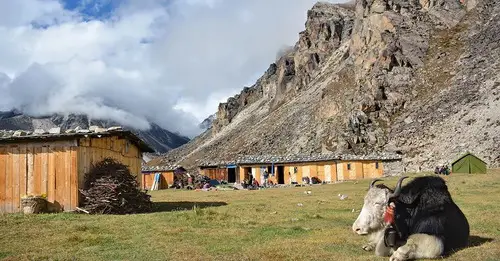
Day 18: Torongding to Yamphuding
After breakfast, the group begins the descent, initially downhill and later ascending steeply for an extended period. They navigate a landslide-prone area, stopping for lunch at a solitary teashop in Lasiya Bhanjyang. Continuing the trek, they descend through more forests until they reach the sizable village of Yamphuding.
Day 19: Yamphuding to Khebang
With the lower altitude making the journey easier, trekkers encounter captivating villages and terraced fields along the way. The path leads them to Khebang, where they spend the night.
Day 20: Khebang to Khamdime
On the final day of the trekking adventure, the group hikes for approximately 4 hours from Khebang to Khamdime. This day marks the transition to vehicular transportation, preparing for the journey back.
Day 21: Khamdime to Bhadrapur (Drive)
Drive time: 10 hours
Day 22: Bhadrapur to Kathmandu (Flight)
Flight time: 50 minutes
Embarking on an early morning journey, we head towards the Kanchenjunga South Base Camp, crossing the Sinion La pass (4,450m) and following a ridge to the Sinelapche La pass (4,830m).
Trekking Insurance for Kanchenjunga Circuit Trek
It is mandatory for all trekkers to get trekking insurance for any treks in Nepal.
Trekking insurance not only provides you with peace of mind and financial protection in case of any unforeseen circumstances during your trek, but also allows you to purchase the permits needed in Nepal to trek.
A comprehensive insurance policy should cover emergency medical expenses, evacuation by helicopter if required, trip cancellation or interruption, and loss or theft of personal belongings. Prioritize your safety and well-being by obtaining a reliable trekking insurance policy that aligns with the challenges and unique experiences of the Kanchenjunga Circuit Trek.
Permits Required For Kanchenjunga Circuit Trek
For the Kanchenjunga Trek, it is necessary to obtain the following permits:
- Kanchenjunga Conservation Area Project Entry Permit (KCAP)
- Restricted Area Entry Permit (RAP) for the trail in Tapethok and Yamphuding VDCs.
Permit Fees of Kanchenjunga Circuit Trek
The permit fees for the Kanchenjunga Trek are as follows:
- Kanchenjunga Conservation Area Project Entry Permit (KCAP): NPR 2,000 per person. There is no time limitation for this permit.
- Kanchenjunga Restricted Area Permit (KRAP): USD 10 per person/ week.
Requirements for Kanchenjunga Trek Restricted Area Permit (RAP)
The following documents and information are required for the Kanchenjunga Trek:
- Valid passport with a minimum validity of six months beyond the expiry date of the RAP.
- Valid Nepal visa extending past the RAP expiry date.
- Application information
- Trek itinerary
- Guide’s insurance details
- Online submission ID provided by the agency
- Details of dollars
- E-copy of a passport-sized photo
Packing List for Kanchenjunga Circuit Trek
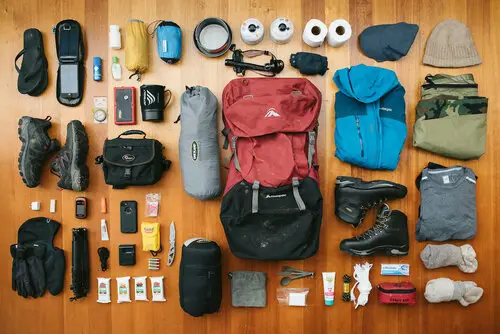
When it comes to the packing list for the Kanchenjunga Circuit Trek, preparation is key to ensure a comfortable and successful journey. As you embark on this challenging adventure, there are a few essentials you shouldn’t overlook. Start with a well-designed hiking backpack for comfort while walking, sturdy and waterproof hiking boots to navigate the rugged terrain. If you’re not sure what backpack is best for the trek, we have a blog to help you choose the best hiking backpack for your trek.
Layered clothing is crucial to adapt to changing weather conditions, so pack a combination of breathable base layers, insulating mid-layers, and a waterproof outer shell. Don’t forget a warm down jacket and a reliable sleeping bag suitable for cold temperatures.
Other must-haves include a trekking backpack, a headlamp with extra batteries, a sun hat, sunglasses, sunscreen, a water bottle, and a first aid kit. To capture the breathtaking scenery, a good quality camera is a valuable addition. Lastly, pack some energy-rich snacks and a positive attitude, as you embark on an unforgettable adventure through the majestic landscapes of the Kanchenjunga Circuit.
Why do the Kanchenjunga Circuit Trek?
By undertaking the Kanchenjunga Trek, you’ll not only experience an exhilarating adventure but also be rewarded with stunning natural landscapes, cultural encounters, and a profound sense of accomplishment.
- Discover the untrodden paths of Nepal’s Eastern mountainous regions
- Stroll beside the renowned glacial lakes in the vicinity
- Indulge in an awe-inspiring journey amidst the rich biodiversity
- Engage in serene meditation at Ramtang and Oktang Monasteries, rejuvenating your weary self
- Relish the blissful moments as you unwind in your tents, nestled beneath the majestic peaks
However, if you feel conquering the Kanchenjunga Circuit Trek is quite ambitious, then you can check out our blog on Beginner Treks in Nepal for novice trekkers or families traveling with children. These treks are easy and offer as stunning and majestic views of the mountains.
FAQs: Kanchenjunga Circuit Trek
The Kanchenjunga trek stands out as a more challenging trek in Nepal. Compared to other mainstream treks found in the Everest and Annapurna regions. Additionally, the level of difficulty experienced during the trek is contingent upon the capabilities and resilience of each individual participant.
Covering a distance of 220 kilometers, the Kanchenjunga trek is both lengthy and demanding, necessitating a commendable level of physical fitness. This arduous journey spans over three weeks, requiring participants to sustain continuous walking while carrying a light backpack.
The total cost of trekking in Kanchenjunga is around USD $2,000 to USD $2,500. If you desire additional amenities and well-appointed accommodations, be prepared to allocate a higher budget for enhanced facilities.
The starting point for the Kanchenjunga trek is Taplejung, Nepal.
Leave a Reply Cancel Reply
Your email address will not be published. Required fields are marked *
Add Comment *
Save my name, email, and website in this browser for the next time I comment.
Post Comment

Speak to Our Experts: [email protected]
- Mount Everest Expedition (8848.86m)
- Mount Kanchenjunga Expedition (8586m)
- Mount Lhotse Expedition (8516m)
- Mount Makalu Expedition (8463m )
- Mount Cho Oyu Expedition (8188 m)
- Mount Dhaulagiri Expedition (8167m)
- Mount Manaslu Expedition (8163m)
- Mount Annapurna Expedition (8091m)
- Ama Dablam Expedition (6812m)
- Mera Peak Climbing (6476m)
- Island Peak Climbing (6189m)
- Lobuche Peak Climbing (6119m)
- Short Annapurna Base Camp Trek Via Poonhill – 7 Days
- Annapurna Circuit Trek via Tilicho lake – 11 Days
- Ghorepani Poonhill Trek – 4 Days
- Mohare Danda Trek – 6 Days
- EVEREST BASE CAMP TREK – 12 Days
- Three Passes Everest Trek – 16 days
- Short Everest Trek- 5 days trek
- Gokyo Trek – 10 Days
- Kanchenjunga Trek – 21 Days
- Langtang Valley Trek – 7 Days
- Manaslu Trek via larke pass – 14 Days
- Mardi himal Trek – 6 Days
- Upper Mustang Trek – 11 Days
- Khopra Danda Trek – 9 Days
- Hiking in Nepal
- Chisapani- Nagarkot Hiking 2Nights 3Days
- Budget Tour- 11Nights/ 12Days
- Diamond Tour- 6Nights/ 7Days
- Pilgrimage Tour- 5Nights/ 6Days
- Kathmandu Sightseeing- 1Day Tour
- Pokhara Sightseeing- 1Day Tour
- Lumbini Sightseeing- 1Day Tour
- All Nepal: Tour Packages
- Astam-Landruk Ecotour
- Chepang Hill Siraichuli Trek
- White water rafting in Nepal
- Bungee jumping in Nepal
- Paragliding Pokhara Nepal Price
- Cycling/ Mountain bike in Nepal
- Chisapani- Nagarkot Hiking: 2N/3D
- Jungle Safari Price in Chitwan
- Kailash Mansarovar Yatra By Land
- Kailash Mansarovar Yatra via Lhasa
- Tibet Tour with Yamdrok, Yerpa & Tsedang
- Tibet Tour With Lhasa & Everest Base Camp
- Bhutan Travel – 7Nights/ 8Days
- Bhutan Tour- 5Nights/ 6Days
- Bhutan Tour- 4Nights/ 5Days
- Bhutan Tour- 3Nights/ 4Days
Kanchenjunga Base Camp Trek – 21 Days

- Destination: Kanchenjunga
- Activities: trekking, city tour in Kathmandu
- Trip Grade: A
- Departure from: Kathmandu
- Arrival on: Kathmandu
- Group size: 1-12
- Best Seasons: Sept- Oct- Nov & March- April- May
- Meals: All Meals are Included (Breakfast, Lunch & Dinner with Tea/ Coffee) - during the trek
- Accomodation: All Accommodations are included during the entire trip. In Kathmandu , pokhara - 3Star level Hotel. During the trek- Lodge as per itinerary.
- Transportation: All Transportation (including Air Flight)
Kanchenjunga Base Camp Trek:
Mt. Kanchenjunga is the 3rd highest mountain in the world and is situated in eastern part of Nepal. The trek is famous for beautiful scenery and wilderness. The place is also culturally rich. Kanchenjunga Base Camp Trek tinerary & Cost gives you insights into how to plan this beautiful trek.
During the trek you can see several high mountains, including Mt. Everest (8848m), Mt. Kanchenjunga (8586m), Mt. Makalu (8485m) and many more other mountains. The trek starts from Kathmandu fly to Badrapur and then drive to Taplejung via Ilam. Ilam is a beautiful place with full of tea farms.
Here you can enjoy freshly brewed tea. The landscape here is superb for the picture. Kanchenjunga is a protected area. So, during the trek you’ll have great chance to see wild animals including Snow leopard and Red panda.
The trek brings you through several Villages of Rai and Limbu people. So, it gives you chance to experience their culture as well. Please see below for the detail itinerary for Kanchenjunga Base Camp Trek.
For Optional trekking route you also can have a look at Everest Base Camp Trek.
“Apex Nepal Treks & Tours” is a guide owned company and we organize best Kanchenjunga trek in Nepal giving you the best Himalayan Experience.
Trip highlights.
- Detail Itinerary
What's Included
- Best view of the 3 rd highest mountain in the world, Mt. Kanchenjunga (8586m)
- Rich in culture
- Tea Gardens
- Waterfalls, Birds, Wild animals, etc.
- Best local food
Day to Day Itinerary
Day01: Arrival in Kathmandu (1,300m)
Day02: Fly from Kathmandu to Bhadrapur- Drive to Taplejung (45 min flight & 9 hrs drive)
Day03: Taplejung to Lalikharka (2265m), 4 – 5 hrs trek
Day04: Lalikharka to Khesewa (2120m),5 – 6 hrs trek
Day05: Khesewa to Mamankhe (1785m), 5 – 6 hrs trek
Day06: Mamankhe to Yamphudin (2080m), 4 -5 hrs
Day07 : Yamphudin to Tortong (2,995m), 7 -8 hrs
Day08: Tortong to Cheram (3,870m), 2 -3 hrs
Day09: Cheram: Acclimatization and Rest
Day10: Cheram to Ramchaur (Ramche) (4,580m), 3 – 4 hours
Day11: Ramchaur (Ramche) to Yalung Base Camp (4500m), back to Cheram: 3 – 4 hours
Day12: Cheram to Sele La (4290m/), 6 -7 hours
Day13: Sele La to Ghunsa (3,595), 2 -3 hours
Day14: Ghunsa to Kambachen (4,050m), 5 -6 hours
Day15: Kambachen to Lhonak (4,780m), 5 -6 hours
Day16: Kanchenjunga base camp, overnight at Pangpema (5,143), 6 -7 hours
Day17: Pangpema to Lhonak : 3 – 4 hours
Day18: Lhonak to Ghunsa (3475m), 6 -7 hours
Day19: Ghunsa to Amjilosa (2,308m), 5 -6 hours
Day20: Amjilosa to Chirwa (1,270m), 6 -7 hours
Day21: Chirwa to Taplejung via Mitlung (921mm), 7 -8 hours trek
Day22: Taplejung to Bhadrapur: 9 hours drive
Day23: Fly to Kathmandu
Day24: Final departure
- Airport pickups and drops in a private vehicle
- 3-star hotel accommodation in Kathmandu
- Teahouse accommodation during the trek
- All meals (Breakfast, Lunch and Dinner) during the trek
- All ground transportation on a comfortable private vehicle as per the itinerary
- Domestic flights (Kathmandu- Bhadrapur -Kathmandu)
- Guided city tour in Kathmandu by private vehicle
- Entrance fees for sightseeing/monument visits as per the itinerary
- An experienced, English-speaking and government-licensed trek leader and assistant trek leader (6 trekkers: 1 assistant guide)
- Porter service (2 trekkers: 1 porter)
- Staff costs including their salary, insurance, equipment, food and accommodation
- All necessary paperwork and trekking permits, TIMS
- All government and local taxes
Accommodations
All Accommodations are included during the entire trip. In Kathmandu ,. During the trek- Lodge as per itinerary.
All Meals are Included (Breakfast, Lunch & Dinner with Tea/ Coffee) – during the trek
Best Time to Travel
Sept- Oct- Nov & March- April- May
0 Reviews on Kanchenjunga Base Camp Trek – 21 Days
Leave a Reply Cancel reply
Your email address will not be published. Required fields are marked *
Related Package
- Print This Trip
- Book This Trip
Photo Gallery

- Destination
- Nepal Trekking
- Wilderness Trekking
- Kanchenjunga Trek
- Duration 19 Days / 18 Nights
- Price from $1699 / person
- Difficulty Level Strenuous
- Max Altitude 5000 Meter
Kanchenjunga Trek has been ranked by many trekkers as the best trekking route in rural Nepal extensive trek going deep into the remote mountain ranges on Nepal’s border with Sikkim and Tibet. The trail explores the area around Kanchenjunga the third highest mountain in the world. You will see a wide range of scenery from lush, tropical jungle through to rhododendron, chestnut and oak forests and then at higher altitudes into the alpine zone. You will see a range of Nepalese culture and life-style from Rai and Limbus to Tibetan Buddhist villages. Kanchenjunga region offers unbelievable trekking, and now in addition to the traditional full camping trek style, it’s possible to do teahouse trek to the region as well. Here is all you need to know!
The trek around Kanchenjunga Base Camp can be done entirely as a basic lodge or tea-house trek in September-October- November and in March-April-May. Kanchenjunga is the third highest mountain in the world at 8586m/28,169ft and is on the border between Nepal and Sikkim (India). Wilderness Excursion’s trekking itinerary to Kanchenjunga only covers trekking route in Nepal on this site. The usual trekking destinations are the viewpoint near the climbing base camps on the south and north sides of this massive mountain traversing between north and south base camps is also highly enjoyable, making for a very pleasing and wilderness experience. The Kanchenjunga Trekking trail is not formed tracks of the Everest and Annapurna regions, though tracks are being rapidly improved up the north side. If you are grateful for a stone hut, wooden bed, evening Daal bhat and daily rough country, you will greatly enjoy this remote trek. Only about 1,000 trekkers a year trek this place compared to over 35,000 in the Everest Region of Khumbu, so it is possible to walk blissfully all day and see nobody else. Most people you will meet will be in camping groups but you may meet some small private groups teahouse trekkers with their guides and porters. Note that there is considerable exposure on many of the tracks, so don’t go if you have vertigo or a fear of heights. This matrilineal Limbu (‘the bearer of bows and arrows’) homeland is not highly populated, particularly on the south side, and the people follow animist, Buddhist and some Hindu beliefs. Phale and Ghunsa on the northern side are uniquely Tibetan in architecture and religious practice but surprisingly by the general lack of outward religious signs that characterize the Khumbu region, for instance. There is a focus on tongba, a local drink; warm millet beer served in brass-decorated wooden pots with a straw. The around Kanchenjunga Trek can be done entirely as a lodge trek in September-October- November and in March-April-May. At the start and end of these periods there may be some lodges closed, particularly at higher altitudes. Always enquire before relying on these notes. There are toilets in nearly all places and phone access, limited on the south side. Wilderness Excursion provides tents just in case the lodges are closed with light meal.
Kanchenjunga range consists of five individual peaks where Kanchenjunga II is the highest among those. People from Kanchenjunga Region believe this mountain as sacred mountain as well as five treasures of snow in the form of gold, silver, gem, grain and holy books in each different summit. Joe Brown and George Band part of British expedition team first conquer the summit of Kanchenjunga in 1955. Entire range generates four different glaciers, which result in couple of famous river for Rafting in Nepal. This is basic Kanchenjunga Information now lets discuss a bit about Kanchenjunga Trekking that is conducted on state of Kanchenjunga Nepal. The first thing foreigner need to know is Trekking in Kanchenjunga is declared as restricted area trekking region in Nepal with strict policy of controlled tourism which clearly state that one need to obtain special restricted area permit as well as need to be accompanied by Nepali citizen before Trekking Kanchenjunga. Since trekkers’ posses special permits there is no necessities of Trekkers Information Management System (TIMS) Card although conservation area project entry permit card is mandatory to obtain. If Trekking Kanchenjunga were in one’s to do list then it would be fruitful to obtain Information about Kanchenjunga.
A teahouse basis trek to Kanchenjunga is now encouraged and promoted as government of Nepal is emphasizing on development of infrastructure on Kanchenjunga Nepal to support the local economy in Kanchenjunga for involving in tourism sector. Trekking in Kanchenjunga can be one of the most adventurous treks with close interaction to Tibetan refugee whose settlement is all the way during Kanchenjunga Circuit.
Day 01: Fly to Bhadrapur and drive to Phikkal (1468m), 5 hours drive.
After breakfast, we drive to Kathmandu airport and take the flight to Bhadrapur and drive to Phikkal at the elevation of 1468 meter from seas level. It takes about 5 hours. This alternative is best for south to north Kanchenjunga Base Camp Trek as it is fastest and cheapest in our estimation and could be used also for north to south with an extra day’s walk down to Mitlung.
Day 02: Drive to Taplejung /Suketar, 8 Hours.
Passing through the major tea manufacturing settlement of Ilam (800m, tea and cardamom elanchai are grown broadly here) after 4hrs, from which you can access Darjeeling, and then Phiddim (1038m) for lunch. The road goes as low as a hot 800m and as high as a cool 2300m. The district headquarter of Taplejung (1870m; ‘fort of King Taple’) was reached after 8hrs. You can walk up to the airstrip at Suketar (2420m) in 1.5hrs or take a jeep for adjoins the airstrip.
Day 03: Trek to Kande Bhanjyang (2129m), 5-6 hours walk.
Trek east up the airstrip onto the road to the right and continue up to Deurali (2578m, Deurali Bhanjyang, deurali and bhanjyang both meaning pass and saddle!). Take the right fork when a road veers left to the pilgrim-magnet Pathibhara Devi Temple (3794m), a day’s walk away. Stay on the rhododendron-covered ridge to Lali Kharka (2266m) where wonderful classic Daal Bhat may be found. The road now terminates here with tractor-trailers and maybe a jeep. Descend and circle through scrubby forest to Tembewa (1800m) after 1hr, then through Simbu (1700m, Simbuwa) or continue down a hot steep path, cross the Phawa Khola (1430m) and up steeply to the scattered bamboo and bananas hamlet of Kunjari (1800m). Overnight in Kunjari or Kande Bhanjyang.
Day 04: Trek to Phumphe (1858m), 6-7 hours walk.
A steep walk up to Gurung Kande Bhanjyang (2130m, Sinchebu, Sinchewa Bhanjyang) with a friendly 5-beded lodge. Enjoy the views of Kanchenjunga and a forest walk on steps down through hot and steamy but very prosperous hamlets growing millet, maize and rice to Delok (upper) Khesewa (2125m) for lunch. Drop steeply to a lovely waterfall under Khesewa and make a long climbing traverse, around a ridge and another long traverse lined with clear small waterfalls, to an endless flight of stairs and down to the neat houses of Phungphung Danda (1860m Pumphe, Pumphe Danda). Fresh red cardamom (elanchai) is harvested at this season from the ginger-like plants under shade trees, at the risk of snakebite to the laborers. Very settled and rich countryside that exudes contentment.
Day 05: Trek to Yamphudin (2080m), 6 hours walk.
Down stairs through a cardamom plantation to a high bridge and then a gentle climb to the pretty and neat Limbu Mamankhe (1780m) where there are several teahouses with beds. Tea with real milk but no coffee. There is one steep climb afterwards in hot steamy conditions with little shade but welcome small waterfalls. We found lunch in a farmhouse2hrs after Mamankhe. One hour after Mamankhe it is possible to turn left on a higher route to Sherpagoan (2000m, upper Yamphudin), avoiding the descent to Yamphudin and reducing the amount of climbing and descent the next day. This route is on small tracks and includes crossing a grassy cliff at length with an exposed narrow trail where a mis-step would be fatal. If this is a concern govia Yamphudin. See more details on days 15 and 16 of north-to-south. Yamphudin (1692m) is smaller than expected but has several comfortable lodges. There is a TIMS and permit check here.
Day 06: Trek to Tortong (2995m), 6 hours walk.
Today we trek to Tortong and this day will long. We can stop for overnight stay at Lasiya Bhanjyang but there is very basic accommodation. And we have to check if it is open before we leave Yamphudin if not open, then we will need to continue down another 2-3hrs to Tortong. An early start makes the first climb, some in shade, less hot. Cross the Amji Khola and climb north to Dhupi Bhanjyang (2540m) and enjoy the forest views. Drop through ancient rhododendrons on a muddy track to a new swing bridge across the Amji Khola at 2340m then up the true right to a closed bhatti and camping area at Omje Kharka. From here, it is an unrelenting but pretty climb on good steps past a wooden seat chautaara, where the track comes in from the left from Sherpagaon, then 20mins later through a pasture marked as Chitre (2925m). Continue climbing on a stepped track in good condition through ancient rhododendrons to the welcome bhatti on Lasiya Bhanjyang (3415m; Lassi or Lamite Bhanjyang). If we decide on to stay overnight here we can climb through silver pines up the hill behind the bhatti for extensive views of our onward route. The trail drops to the grassy pass overlooking an immense landslip with a view of Mt Jannu (7711m, Kumbakarna) to the northeast, then climb about 150m above it and descend on a muddy zigzag through lovely ancient forest with maples turning yellow and the deciduous larch, a 9 feature of the Kanchenjunga. Cross the Simbuwa Khola and make a short climb to Tortong (2980m, Torontan) consisting of two good lodges with separate rooms, well-stocked shops with Snickers and Mars and even electricity. These lodges may be open from September-November and often February then March-May inclusive although if demand increases so too may the length of the season.
Day 07: Trek to Cheram (3870m), 5-6 hours walk.
Today a long way and tiring climb of 900m ascent beside the river, but this is one of the most beautiful walks, the changing sounds of the river, moss hung forests with huge pines and larches giving way to a huge range of rhododendrons, all mixed with various broad leafs turning with autumn. In warm sun with a following breeze there are few better places to be. Watch out for the grazing yaks, some are frisky. About 1hr finds a Yak Kharka where we may get a meal or tea. After another 40mins there is a new basic lodge at Anda Phedi, but closed in winter. Yaks from Yamphudin are taken for grazing by the track that heads up to Anda Pokhari from here. After 30mins there is a be flagged Buddhist and be-trident Hindu shrine with a snake shape in the rock, north of which there is supposed to be a prohibition on the killing. There is electricity and there are well-stocked shops.
Day 08: Acclimatization day at Cheram (3970m)
As it is vital to have acclimatization, today we take rest day in Cheram due to the elevation gain the previous days. We can walk towards Ramchaur to a lake with spectacular views and back again in an easy 5 hours and could easily have gone to Ramchaur. 16km on a rest day! You could also climb directly above Cheram, or just rest.
Day 09: Trek to Ramchaur (4580), excursion Okhardung (4730m) back to Cheram
Walk up through moss-hung pines and rhododendrons with a small clear stream, climb and cross a large loose gully and climb again into the seasonal yak pasture at Yalung. There follows a beautiful series of open ablation valleys, juniper, cinnamon-scented dwarf rhododendrons and moraines and lakes with the Kabrus, Rathong and Kokthang hanging above. Care will be needed crossing the many 10 frozen streams and seeps. Watch out for yaks, some are totally wild, and for herds of blue sheep. The hidden stone lodge of Ramchaur (4610m; Ramche) is beautifully located and open March-May and September-November but we ask in Cheram first at each end of these seasons. Climb the nearby moraine wall for Yalung Glacier and mountain views and watch for snow pigeons, flock of blue sheep.
Day 10: Trek to Selela Camp (4290m) 6-7 hours walk.
Today we connect our trek with to the north side Kanchenjunga via a wonderful traverse smelling overwhelmingly, at altitude in autumn, of the honey-cinnamon of dwarf rhododendron. The pass is remote and exposed to weather so consider a rest day in Cheram if the weather may spoil the views. The 800m climb above, Cheram has a reputation for steepness gained from those who have descended it. It is steep but firm underfoot and soon overcome. Climb to Sele La (4725m) in about 3 hours past two frozen tarns and one large cairn without flags. Descend a little and traverse right, gently up and down in lovely high pastures and scree with views as far as Makalu and even Everest. After about 1 hour, pass a left-descending track to the blue lakes Anda Pokhari and further down to Anda Phedi where there is now a lodge. Near here you can refill your water bottle from the only flowing stream. A short climb takes you to prayer flags and a stone heap on a distinct pass that people from Ghunsa call the Misisay La (4645m) after the death 20 years ago of a Tibetan and two yaks at this point. Continue traversing, noting Lion Rock on the ridge above, and reach the windy and prayer flag-strewn notch Mirgin La (4645m) after about 1.5hrs, from which the views of Jannu are as good as any available, together with Makalu, the long ridge of Chamlang and even a glimpse of Everest. Drop steeply into a boulder-choked valley with underground flowing water, eventually arriving in a classic cwm with the Selele Khola flowing crystal clear though the middle. Selele camp (4130m, Mani Bhuk).
Day 11: Trek to Gunsa (3595m), 4 hours walk.
A short walk of 4 hours, we continue the northern traverse on a narrow rocky trail to Selele La (4200m) with cairns and flags, continue circling with views down the Selele Khola, up to rocky peaks and rock falls, across to the Nangba La at 4795 meters which can be used to access Olangchunggola. Eventually there is a chorten and prayer flags named Tama La locally that mark the start of a steeper descent through old-growth rhododendrons, silver birch, silver pine and larches below towards Gunsa , a large clean village of traditional wooden houses set in larch and pine forest. In Gunsa; the houses are charming, with rocks holding down shingles on roofs, dark weathered pine walls, a forest of prayer flags and juniper burning in the morning. Yaks, dogs, goats and chickens roam the main street. Fresh milk and dahi (yoghurt) may be obtained in season. There are several lodges in Gunsa, some lodges claim having internet.
Day 12: Trek to Khangpachen (4100m) 5 hours walk.
Most people can climb to 3000m without getting altitude illness, but the altitude gain this day is about 750m, double the 300m per day advised for safety. Watch for signs of altitude sickness and be ready to rest if they develop. Consider using Diamox and remember that there are no clinics or easy communications in case of trouble. If you take a rest day in Khangpachen, there is a lovely side trip closer to Jannu. Take the obvious track up through Gunsa and cross a bridge, icy in the mornings. The autumn larches above are like sunlight along the Gunsa Khola in October-November, one of the highlights of many visits to Nepal. Gentle pleasant walking through larch, rhododendron, silver pine and cedar forest, with yaks coming down loaded with potatoes and the valley ahead blocked by the huge Jannu terminal moraine. After 3hrs cross a plank bridge to the true right, circle two big slips with significant rock fall danger and striking views of Jannu (7711m, Kumbhakarna) and climb steeply. Then stop and admire the best views of Jannu! Traverse and eventually cross a small stream into Khangpachen (4145m; Khambachen) with about 10-12 stone houses.
Day 13: Trek to Lonak (4785m), 4-5 hours walk.
Walk up passing the chortens above Khangpachen then steadily on the true right bank with beautiful icy rocky peaks all around, though big areas of sea-buckthorn that fruit prolifically in October but are not harvested locally. There are we have chances have spoting large flocks of blue sheep. At times there may be avalanche snow across the track that can make crossing streams difficult sometimes. The last 30mins traverses a loose and exposed gully wall at length, crosses a rude bridge and then a sandy plain to seven scattered huts of Lhonak (4792m). There is basic teahouse with a triple bed room, and two dark twin bed rooms This is a very atmospheric place, mountains walls about a plain of yaks, particularly at night when you seek the ‘open toilet’ – be careful what you shelter behind! Walk up towards the Lhonak Glacier for the afternoon but take your warm clothes.
Day 14: Excursion Pangpema, Kanchenjunga BC (4978m) and back to Lonak.
It is Kanchenjunga North Base Camp Excursion today taking you deep into the mountains with time to delight and acclimatize but glacial retreat is collapsing the moraine terrace, meaning that some sections require considerable care and there is an ever-present risk of stone fall. About two-thirds of the walk is on grassy terraces. The views of Kanchenjunga and the glacier are surprising. Again we may see more blue sheep, snow partridge and rock rabbits etc. There is a single hut in Pang Pema (5140m) which is open from September to sometimes mid-November and in April to May and sometimes March and serves noodles for lunch. A limited number of people could sleep inside. Pang Pema is generally regarded as the north base camp since it provides a complete view of the north face of Kangchenjunga, but it is possible to go further on deteriorating moraine walls – probably better to spend the time climbing the rocky ridge above Pang Pema for wider and wider views if you have the energy. Retrace your steps for a second night in Lhonak, generally it is windy after 10am into the up-valley.
Day 15: Trek to Gunsa (3595m), 6 hours walk.
A very delightful walk with full valley views of the golden larches in season. Retrace your steps down-valley to Khangpachen in 3-4 hrs taking care on the icy bits. Lunch is available, then on to Gunsa in another 3-4 hours, taking care on the two big slips which are now in the sun. The smell and sights of the forest are enchanting after the barren uplands. It is a 1600m descent today so watch your knees. You recommend taking trekking poles.
Day 16: Trek to Amjilosa (2510) 6-7 hours walk.
Cross the Gunsa Khola on a swing bridge near the Yak Hotel, turn left, pass the ancient Tashi Choding Gumba (which welcomes visitors but is usually locked) and climb to a memorial to the many wildlife people killed in an horrific helicopter crash near Gunsa in 2006. Look up right at the next bridge to the route to a yak hut just under Nango La (4795m), by which it is possible to reach the ancient village of Olangchunggola (3000m) in two days. This village is reputed to be the original village settled from Tibet more than 600 years ago but there is no accommodation at present. Descend through the Tibetan refugee village of Phale (3215m) after 1hr. This atmospheric village offers a glimpse of authentic Tibetan 13 culture with two active gompas, carpet-weaving and traditional lifestyle. It is pleasant day dominated by the awesome river and beautiful silver pines, blue spruce, rhododendrons and autumn larches. Two short steep climbs separated by a bridge bring you to Gyabla (2725m) for lunch. Make a very messy steep descent into thick bamboo forest, dark as night but reputed to harbour red pandas. Black bears have been sighted in broad daylight across the river. The stony track goes up and down in bamboo until a small farmhouse at 1.5hrs followed by a steep 45mins climb and traverse on a narrow exposed track until finally Amjilosa (2400m) is sighted across a large slip.
Day 17: Trekking to Chiruwa (1270m)
A long swing bridge crosses the Tamor River which drains the valley that contains Olangchunggola and the Gunsa Khola. The shortcut immediately left on leaving the bridge saves the climb through Lelep but is narrow and rough in places and climbs up to rejoin the main trail through Lelep. The cliffs across the valley have native honeycombs hanging in their sheltered places. Don’t cross the next swing bridge below on the left but climb up to regain the track through Lelep and continue on the true right for about 1hr. A broad stone path eventually drops to a flat and beautiful walk through rice, millet and buckwheat fields interspersed with cardamom plantations. Much of the track is in welcome shade. Cross to the true left at Tapethok (1322m) with a Kangchenjunga Conservation Area check post for those entering but not for those leaving the area. Turn right, sidle the river and eventually cross a landslip of truly immense boulders. In 30mins suddenly arrive in busy civilized Chiruwa (1185m) with pretty thatched houses, well-stocked shops and ISD/STD phones.
Day 18: Trekking to Suketar (2420m) / Taplejung
Follow the tractor road and arrive in Mayam (2000m) where you may score noodle soup. Afterwards, cross a swing bridge below the road and, taking numerous shortcuts steeply up to avoid zigzags, reach another new road and shops on a pass. From here, follow the road direct to Suketar (2420m) in about 2.5hrs, circling and descending in the last stages. You can see Taplejung ahead and below. A tractor-trailer comes along this top road daily from Suketar and returns in the early evening but it is best not to rely on it. Treat it as a bonus if it happens and if you want a rough and dusty ride. Overnight in Suketar.
Day 19: Fly back to Kathmandu, overnight in Kathmandu
After breakfast take flight to Kathmandu. Rest and relax in afternoon in Kathmandu. Wilderness Excursion sends a private car or private van as per group size to pick from domestic airport and transfer to hotel.
What's Included
- Airport pick and drop off by private car or van depending on group size.
- 1 Government registered, experienced, English speaking local friendly guide.
- Assistant Sherpa guide to support group and help the potters as per group size.
- All necessary Sherpa porters to carry your main pack and camping gear.
- Kathmandu - Bhadrapur by domestic flight.
- Taplejung - Kathmandu by direct local bus
- Meal: 18 Breakfasts, 19 Lunches and 18 Dinners.
- Tea house accommodation during the trek.
- Guide and porter fee with all their expenses.
- Kanchenjunga Trekking permits and documentation fee.
- All local taxes airport taxes for domestic flight,
What's Excluded
- Transfers, accommodation and meals in Kathmandu.
- Alcoholic and beverage drinks and appetizers.
- Personal nature expenses: eg laundry, toiletries, internet, phone calls.
- Guided sightseeing in Kathmandu.
- Personal travel insurance and trekking gears.
- Rescue operation charge in case of emergency.
- Any operating cost which arise due to a change of the tour, because of landslides, political trouble, and strikes etc.
- Tips for your guide/porter
Availabilities
Great trek to kanchenjunga base camp.
I took a 21 days trek Kanchenjunga Base Camp in April 2015 with Wilderness Excursion. Everything was perfect! Pradip Tamang who is the manager and also guide sometimes responded to me quickly for any questions I had via email before the trek. When I arrived in Nepal, we met at [...]
Send an Inquiry
We are associated.

- Best Hikes In The World
- Appalachian Trail
- European Hikes
- Nepal Hikes
- Patagonia Hikes
- See All Hikes
- Mount Kenya
- Mount Kilimanjaro
- Mount Toubkal
- See All Mountains
- South Africa
- New Zealand
- Switzerland
- United Kingdom
- Packing Lists
Kanchenjunga Base Camp Trek – Hike To Kanchenjunga
Asia , Nepal
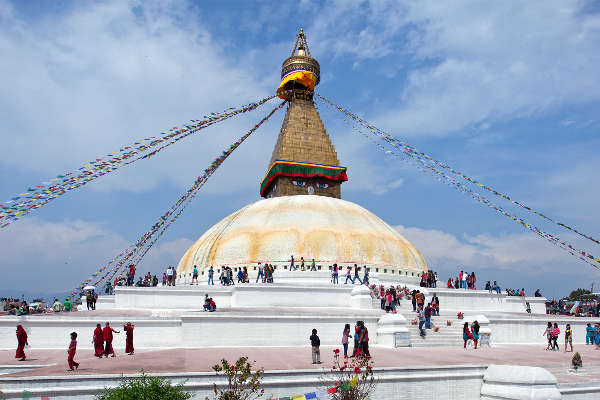
The Kanchenjunga Base Camp Trek provides unsurpassed views of snow-capped mountains. The forests of rhododendrons are also enchanting and there is much wildlife to be seen. The area is one of 200 recognised by the World Wildlife Fund as a global ecoregion – one of the Earth’s most biologically outstanding habitats. A quarter of Nepal’s red pandas live in this region.
On this page, you will find a comprehensive and impartial guide to the Kanchenjunga Base Camp trek.
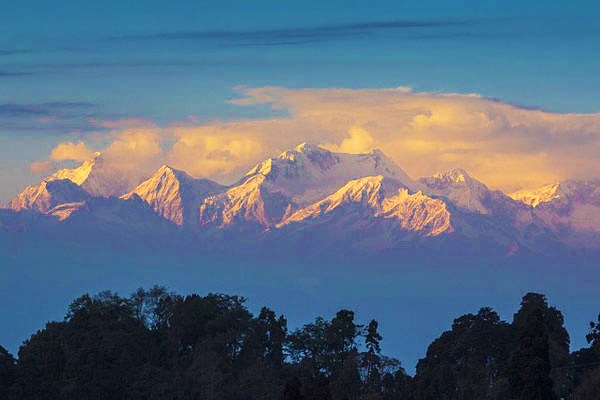
Kanchenjunga Base Camp Hike
Kanchenjunga, meaning “five great treasure houses of the snow,” is the third-highest mountain in the world and the second highest in Nepal. Until 1856, it was believed to be the highest of all.
The Kanchenjunga hike is one of the longest treks in Nepal , taking from 23 to 29 days. It is possible to make this a tea house trek, as the government has encouraged the building of infrastructure around not just Kanchenjunga but all of the Himalayas . However, in Lhonak, Kambachen and Kanchenjunga Base Camp, lodges only open when there are more trekkers.
The avalanches that can erupt on Kanchenjunga are widely believed to be the largest found anywhere in the world.
Kanchenjunga Regional Map
Kanchenjunga, one of the least-populated regions of Nepal, is on the country’s eastern border, next to India.
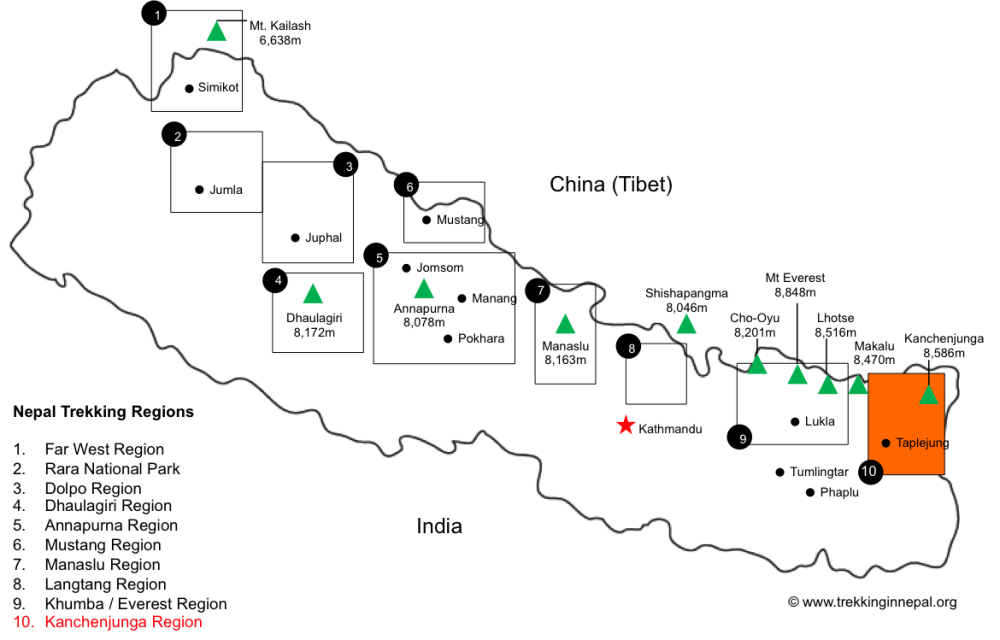
Recommended Kanchenjunga Map
We recommend the following map - A Trekking Guide to Kanchenjunga (Himalayan Travel Guides .
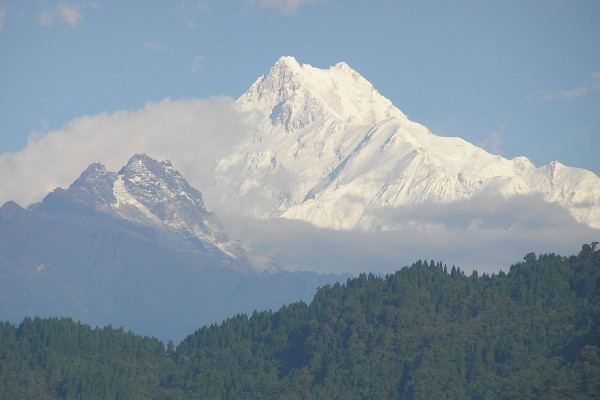
Kanchenjunga Base Camp Trek Itinerary
Below is a detailed Kanchenjunga Base Camp Trek itinerary.
Please note that there are several Kanchenjunga trek itineraries that can be done. Below, we have laid out the most popular version – 28 days, leaving from Kathmandu.
You will arrive at Kathmandu’s Tribhuvan International Airport and transfer to a hotel. Kathmandu is brimming with attractions. A major one is Boudhanath Stupa , one of the largest Buddhist shrines in the world. Another is Pashupatinath, the country’s most famous Hindu temple, where you can see sadhus (holy men) meditating, pilgrims bathing and sometimes funeral pyres ablaze. Another site is Bhaktapur Durbar Square, a medley of pagoda and shikhara-style temples surrounding a 55-window palace constructed of brick and wood.
I recommend checking out my article on the best things to do in Nepal , which includes lots of attractions in Kathmandu.
You will take an afternoon flight to Biratnagar which lasts for 40 minutes.
Another flight, this time lasting 30 minutes, transports you to Suketar Airport in Taplejung. In the afternoon, I recommend you get some exercise: an easy walk of two or three hours can be had along the ridgeline to the grazing area of Lali Kharka. You will most likely be camping from now until you return to Kathmandu.
You will traverse the hillside for a short distance and then descend to the village of Pakora on the Phawa Khola. You will cross a suspension bridge prior to a steep climb that heads for Kunjuri. After lunch, the campsite at Khesawa is not far. Here, you are presented with your first views of Kanchenjunga. The south and main summits and Kangchenjunga West, otherwise known as Yalung Kang, ought to be visible.
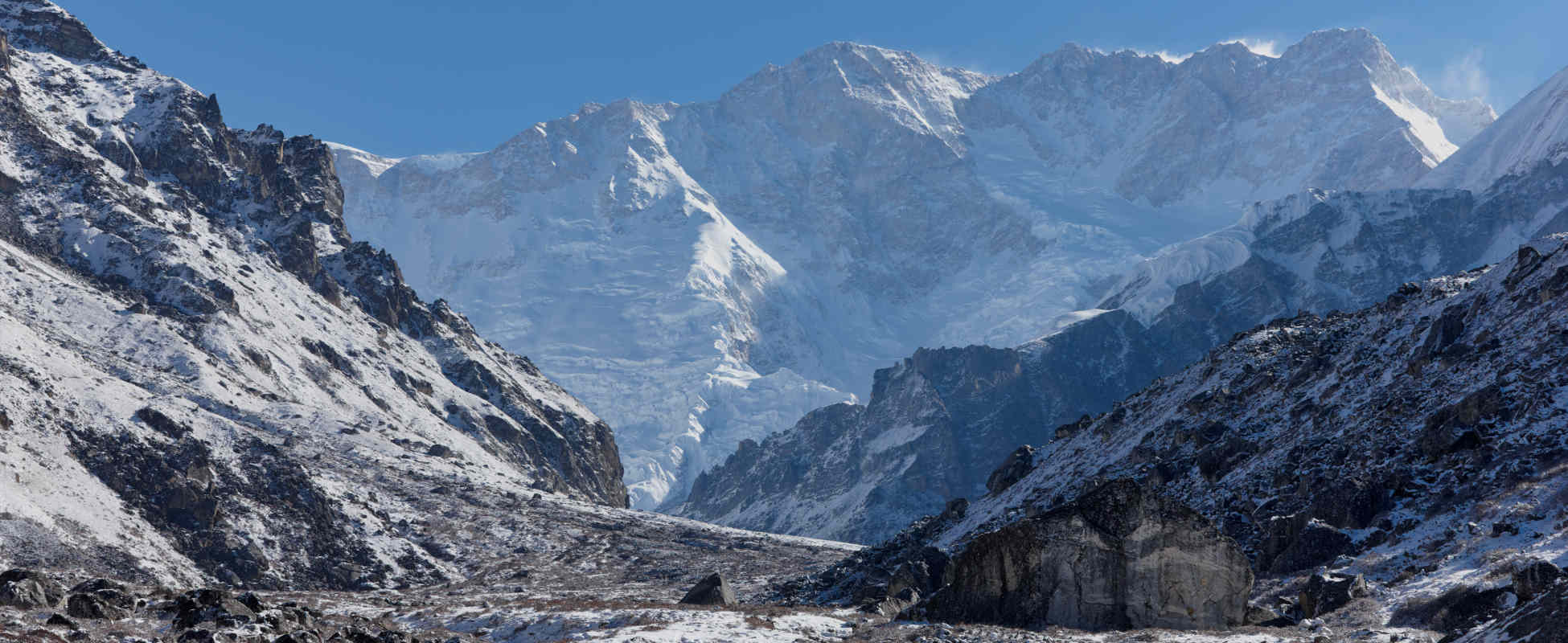
Today, you will cross steep hillside far above the Kabbeli Khola. There are ups and downs but no shortage of shady places to rest. Following lunch, you will pass the village of Anpan prior to descending to cross the Kashawa Khola. Then it is time to climb once more, through terraced fields to the village of Mamankhe.
Day 7
Walking begins with a gentle climb on a track above the Kabeli Khola. The path undulates as it passes ridges. After that, the ground is mostly flat. Eventually, the river becomes level with the trail, after which there are a few hours before Yamphudin is reached. This is the last village you will see before Ghunsa. This charming place is found below the ridge at Deurali Danda, which you will cross, and then the tent comes out.
Leaving Yamphudin, you will find yourself on a trail that ascends a steep spur, a sight to which you will grow accustomed. You will trek through pleasing forest. Lunch is in a meadow with a grand view to the north and south. A sharp drop to a river brings you to an interesting bridge over the Omje Khola and then your campsite at Chitre.
Your day begins with three hours ascending steeply to the crest of Deurali Danda, mostly through dense forest. You will arrive at a pass from which you can see Jannu. You will descend across steep and exposed areas and then go back into the beautiful forest. The path goes down the the valley of the Simjua Khola. You cross a very interesting-looking wooden bridge to reach Tortongn, where numerous rock shelters provide places to camp.
You will follow the river through more beauteous forest, with conifers giving way to rhododendrons. The valley climbs steeply and as the day progresses, trees become increasingly stunted and scattered. In the distance, you can see snow-capped giants. Just before you get to Tseram, the mammoth heights of Kabru and Rhong peaks come into sight. Tseram, where you stay, is a grazing area. The temperature at night is a reminder that you are really gaining height.
In the run-up to Ramche, the scenery is marvellous. You will pass the snout of Yalung Glacier, where there is a series of ablation valleys which make for easy walking. The highlights of this stroll are clear streams, a frozen lake and views of Kabru, Koktang and Rathong.
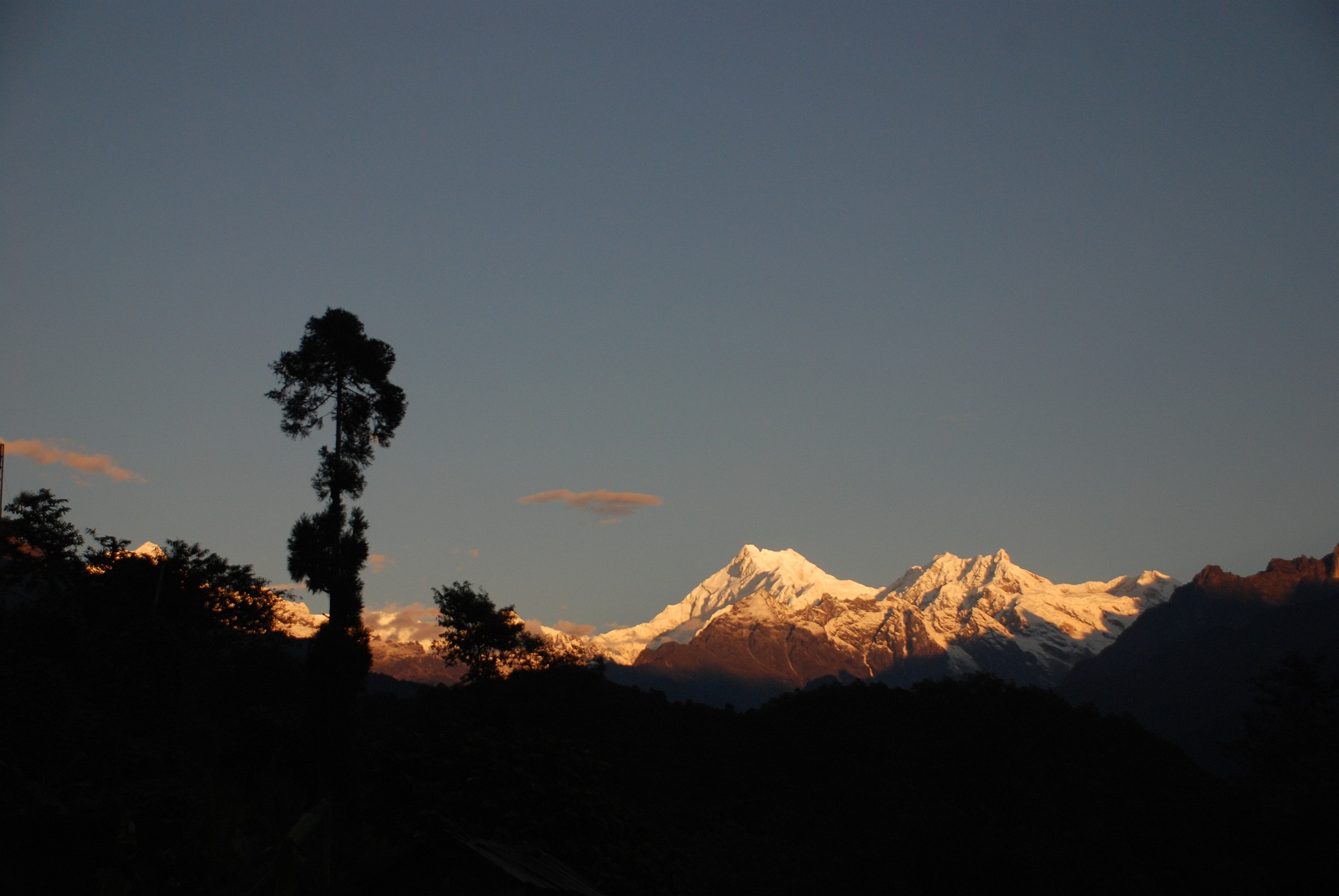
Kanchenjunga is clearly visible and stunning. You cross the Yalung Ri glacier. At Oktang, you will be on a massive ridge that forms a cirque – a steep-walled, bowl-shaped mountain basin – that is more than nine miles long and always more than 25,000 feet. Kanchenjunga’s three main summits can be observed – a breathtaking mountain panorama.
You will remain at a high altitude. Determination is called for. Crossing high passes is only possible in good weather – and with good logistics. Your abode for the night will be at Yalung Ri Base Camp.
Traversing the Yalung Glacier, the walking is good.
You will trek down a valley, then come to a pass that is rough and dangerous. After what begins as a steep climb with a number of false summits, you will reach Mirgin La. On the horizon are Everest, Jannu, Chamalung, Gyakung Kung, Lhotse and Makalu. To the south is the Terrai, a belt of marshy grasslands, savannahs, and forests that is a most worthwhile sight.
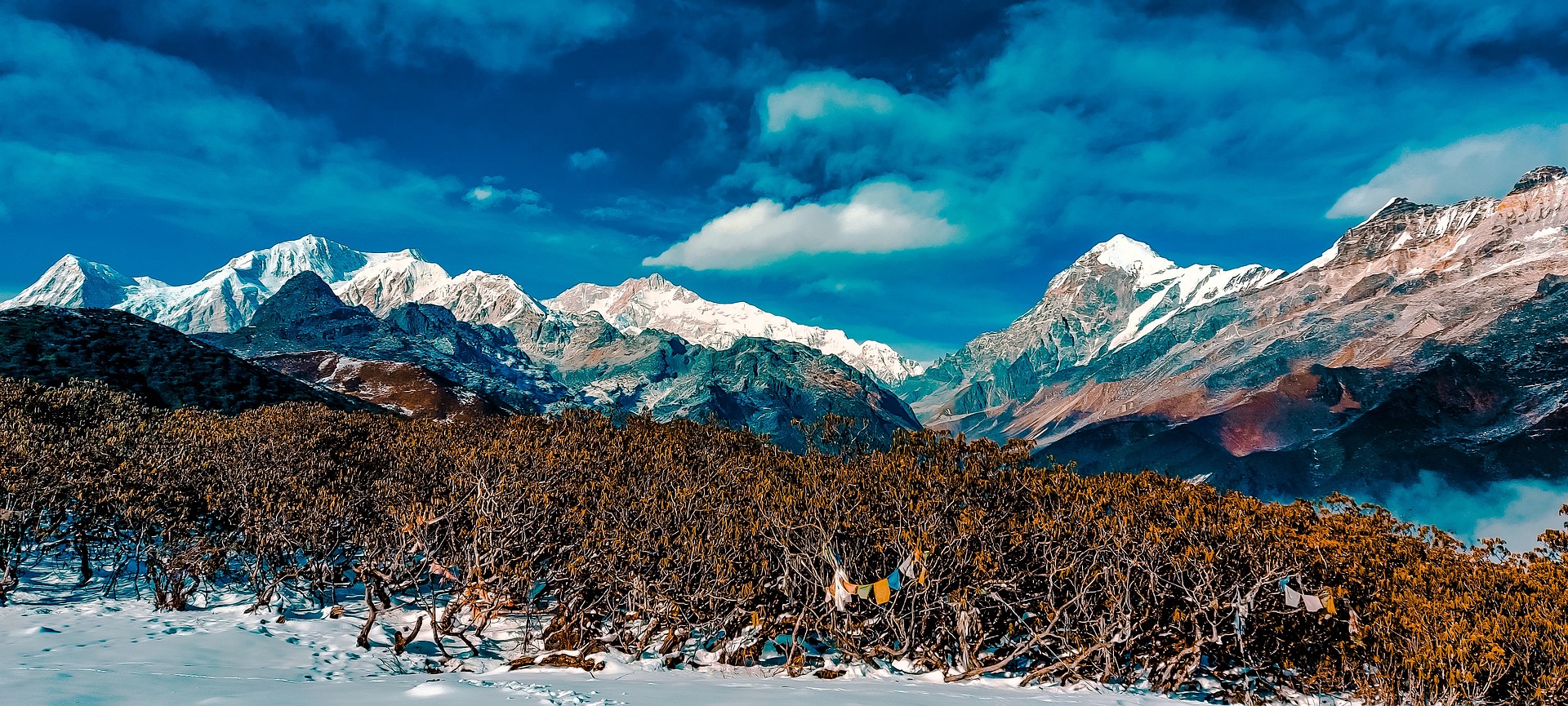
Now, you will face four more passes, although there is little by way of descent between them. After lunch, you will descend to Lamba Sumba Kharka, replete with more views of the impassive southwestern face of Jannu. From here, the going is easy, and you will follow a pleasant, forested trail that brings you to Ghumsa, a picturesque village where prayer flags flutter from wooden houses and there are two monasteries. This is a most welcome sight after so many days in the wilderness.
A local speciality is tongba, an unusual alcoholic drink: boiling water is poured into a jug or large bamboo cup filled with fermented millet seed. It is drunk through a special straw. After walking for between four and six hours, you may wish to partake of this.
South of Ghunsa Khola, the trail ascends. You will cross flood plains and emerge onto a pasture north of the river. There is a steep climb, and you will then cross a slide before descending to Lakepo. There is a short climb that puts you in the village of Kambachen.
This day is devoted to acclimatisation. A day hike will take you to Jannu Base Camp. A shorter hike will allow you to explore the vicinity of Kambachen. Or you could catch up on your laundry. Or even read a book, so long as you brought a good one.
A gentle climb through rocky fields puts you in Ramtang. You will cross northwest of the Kanchenjunga glacier to reach Lhorak, which is situated on a sandy plain close to a dry lakebed. There are beautiful mountain views in every direction. Water is scarce in Lhorak, so you should be abstemious. You will camp between boulders to protect yourself from the wind.
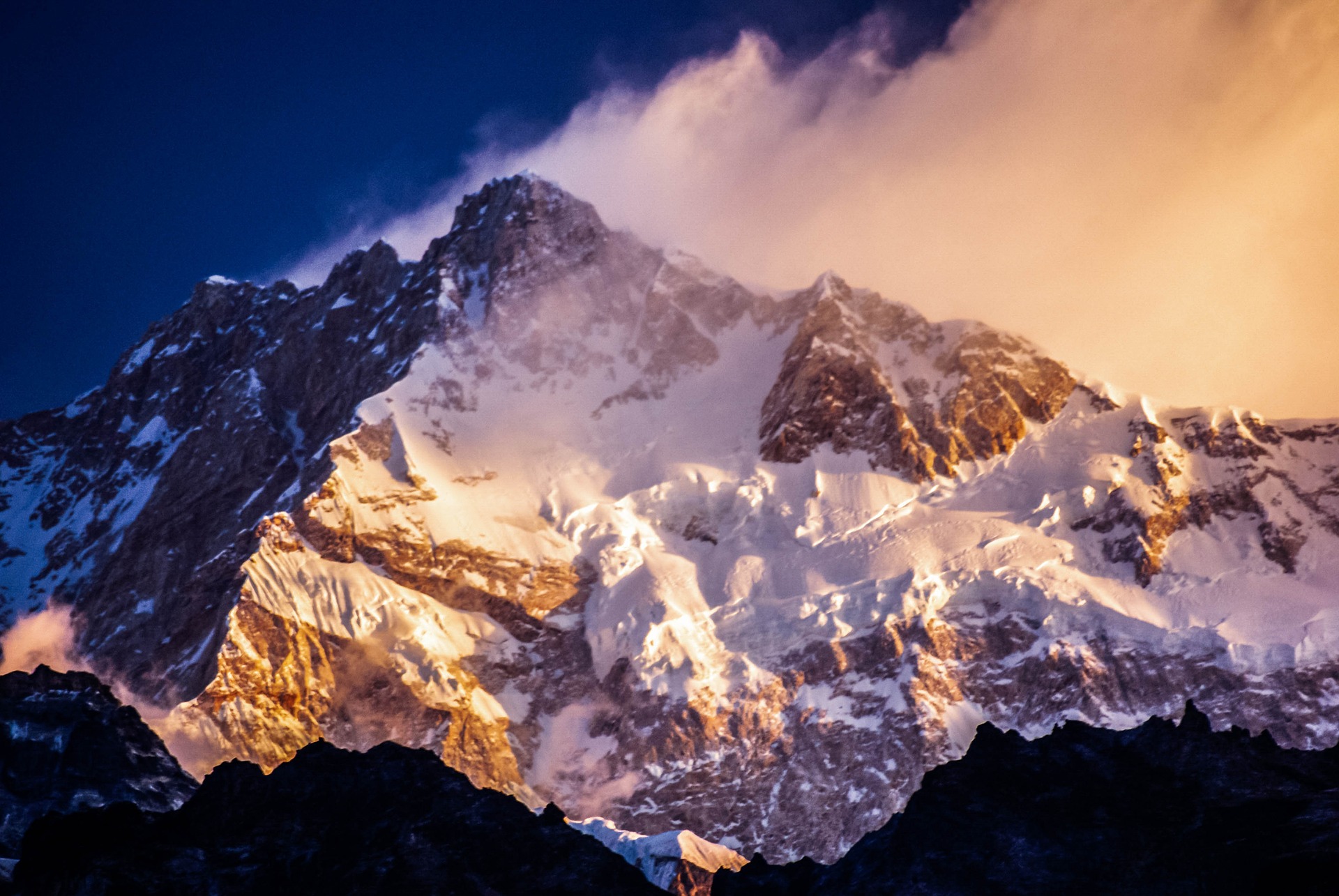
From Lhorak, the path ascends slowly through a plain but later becomes steeper. This will get you to Pang Pema, the base camp for Kanchenjunga, which is 16,900 feet up. Since Biratnagar was only 266 feet high, you will have come a long way. Here, you will get the best view of the peak of Kanchenjunga.
You will hike a few hundred feet up a ridge to the north of Pang Perma. This is a wonderful vantage point where Kanchenjunga, Tent Peak, the Twins and Wedge Peak stand before you. You will then descend to Kambachen.
You will descend once more, this time through magnificent forest. You will pass Ghunsa and, an hour later, Phole, a village split into two sections, one of which is for Tibetan refugees. After that is Yangswa, where you will camp for the night.
Today sees more lovely forest which soon turns into steep, grassy hillside. It is there that you will find Amjilosa.
Now, you will have a short climb and then a radical descent, which consumes most of the day. Camp will be at the junction between the Tamur and Ghunsa Kholas.
You will cross the Simbu Khola, which stems from Kanchenjunga’s southern base camp. It is pleasantly warm at such a low altitude – only 4,000 feet. Cardamom grows freely in this moist and shaded forest. You will cross a goodly number of small tributary streams to reach Chhirwa, a village surrounded by large boulders. Camp will be in a field before the village.
You will encounter minor valleys and picturesque villages before reaching Suketar Airport late in the afternoon.
Flying from Taplejung , you will have a final glimpse of the mountains with which you are now rather more familiar.
You will return to Kathmandu.
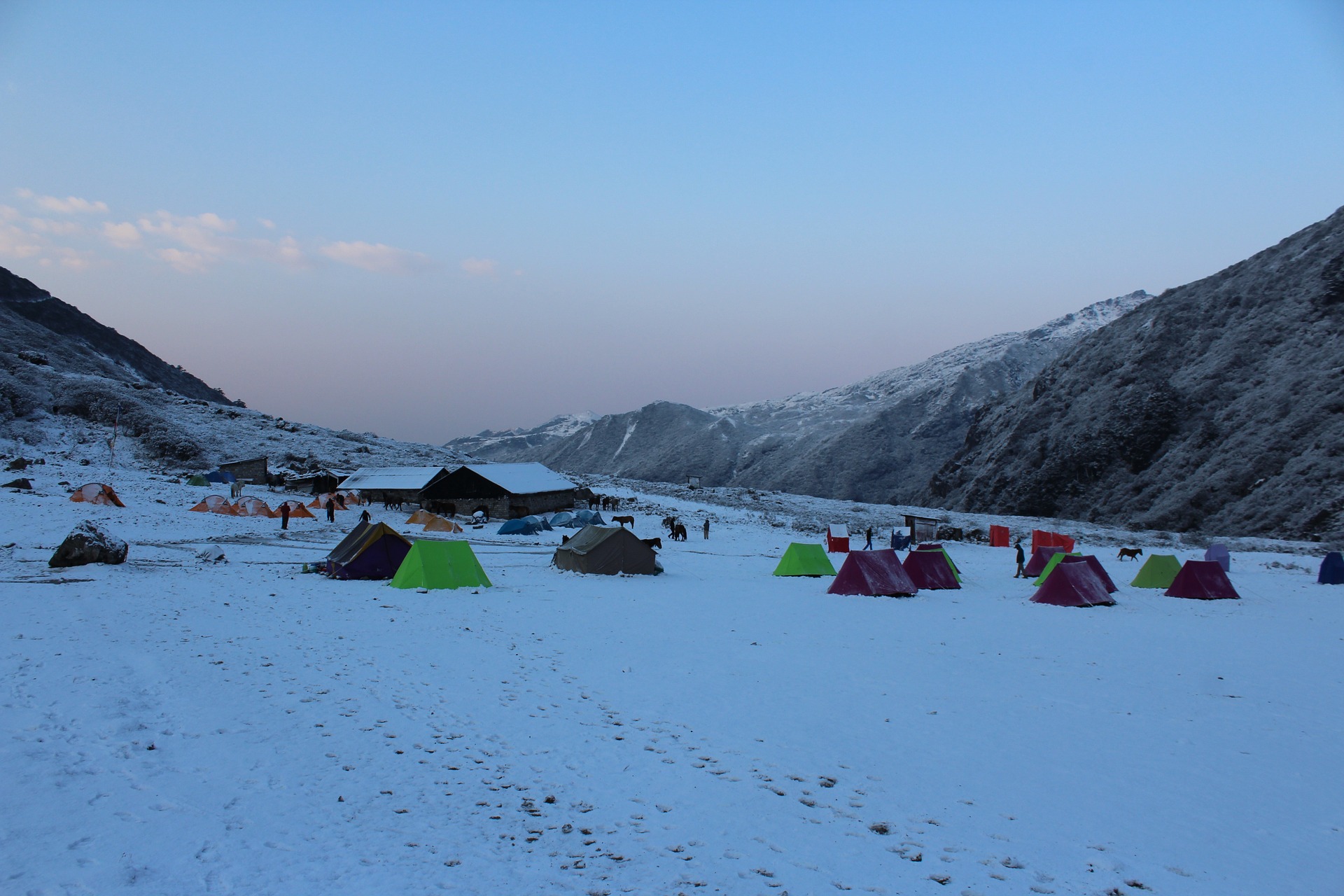
Kanchenjunga Base Camp Hike FAQ
How much does the kanchenjunga base camp trek cost.
Costs for the Kanchenjunga Base Camp trek tend to be above $5,000, but there are some Nepal trekking companies who will run the trek for as little as $3,000.
Are permits required for the Kanchenjunga Base Camp trek?
Yes, a permit is required for the Kanchenjunga Base Camp Trek (a restricted trekking region) which costs $10 per person per week. This obviates the need for a Trekkers Information Management System card. There must be at least two trekkers in your party and a registered guide who will cost roughly $35 a day. You also must pay for entrance to the Kanchenjunga National Park which costs about $20.
When is the best time to trek Kanchenjunga?
The best time to trek Kanchenjunga are autumn and spring. Fall/Autumn is from September to November and is the best time for Nepal Trekking in general, while spring is from March to May.
Is altitude sickness a risk on the Kanchenjunga Base Camp hike?
Yes, there is some risk of altitude sickness on the Kanchenjunga Base Camp trek because it ascends to some high altitude points. At its highest point, Pangpema, you will reach an altitude of 5,030 meters (16,500 feet). There are steep sections on this trek where you will ascend very rapidly. It is important to have a clear understanding of the risks associated with high altitude trekking and how the body acclimatises to high altitudes .
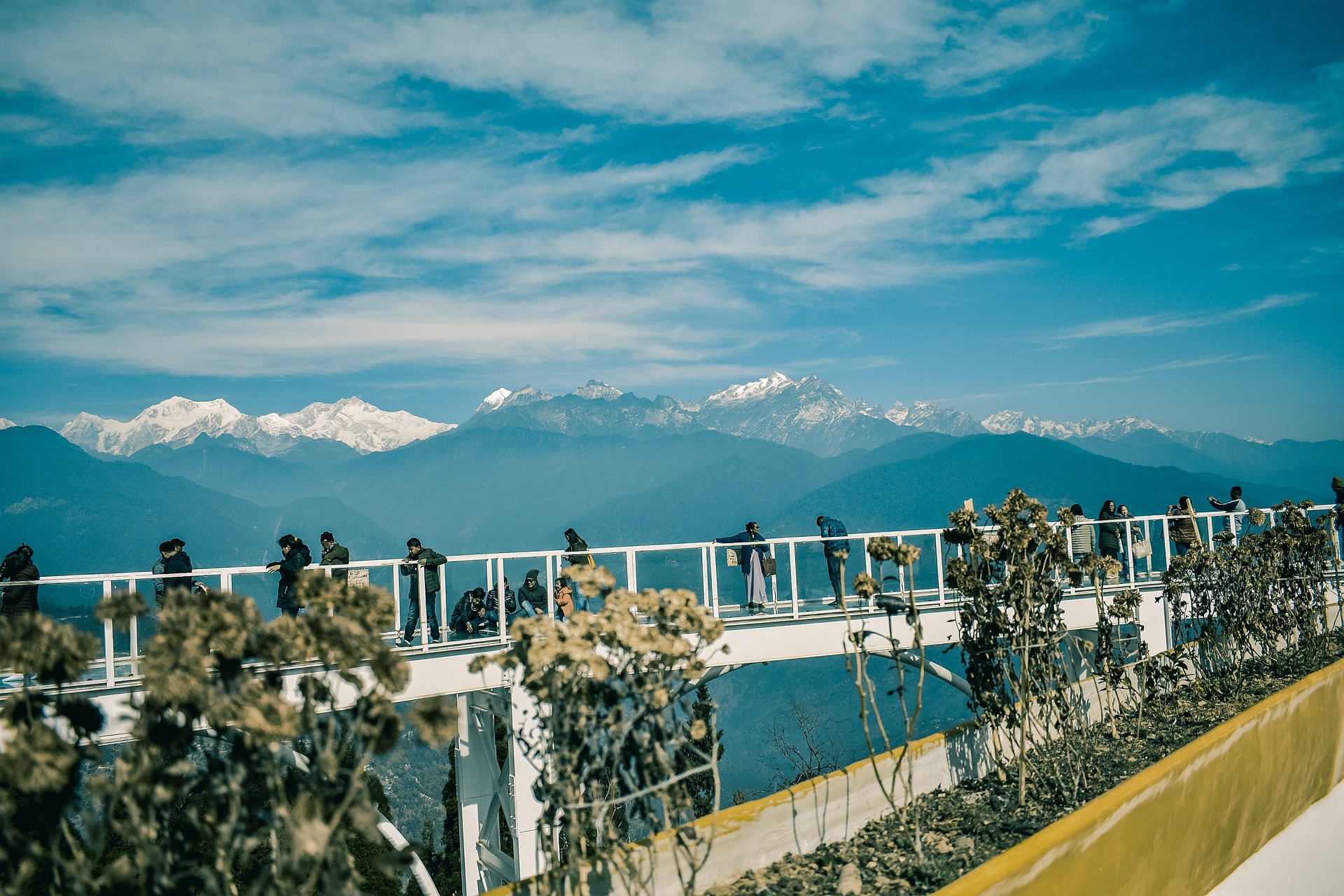
How difficult is the hike to Kanchenjunga Base Camp?
The Kanchenjunga Base Camp Trek is challenging. It is one of the longest treks in Nepal and requires constant hiking for over 3 weeks. You will need a good level of fitness and determination. There are some very steep sections and high-altitude points along the route that also make the trek a strenuous one.
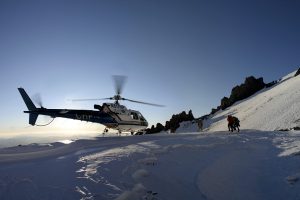
Do I need insurance for the Kanchenjunga Base Camp Trek?
I recommend you get insurance coverage for the Kanchenjunga Base Camp hike. If an accident or incident should occur that requires immediate medical assistance and evacuation, you will most definitely want hiking insurance that can cover the costs of air ambulance and treatment.
Make sure you have trekking insurance for Nepal that covers you for any travel related risks, like lost, stolen, damaged or delayed baggage, interruptions and flight delays and tour operators' default.
Are there any recommended guidebooks for Kanchenjunga?
Yes, there are a few Kanchenjunga guidebooks that we highly recommend.
In terms of guidebooks, we recommend A Trekking Guide to the Nepal Himalaya: Everest, Annapurna, Langtang, Ganesh, Manaslu & Tsum, Rolwaling, Dolpo, Kangchenjunga, Makalu, West Nepal by Sian Pritchard-Jones, Bob Gibbons and the Himalayan Map House.
There are dozens of books about the Kanchenjunga region as well. For instance, there's Living on the Edge: The Winter Ascent of Kanchenjunga by Cherie Bremer-Kamp. Kanchenjunga gets a mention in Do What Thou Wilt: A Life of Aleister Crowley by Lawrence Sutin. In his novel, A Movable Feast , Hemingway described Crowley, an occultist, as the most evil man in the world; to be mentioned in a book about him is deeply flattering - not that a mountain will feel it.
See our recommended library of Nepal books and guidebooks for more options.
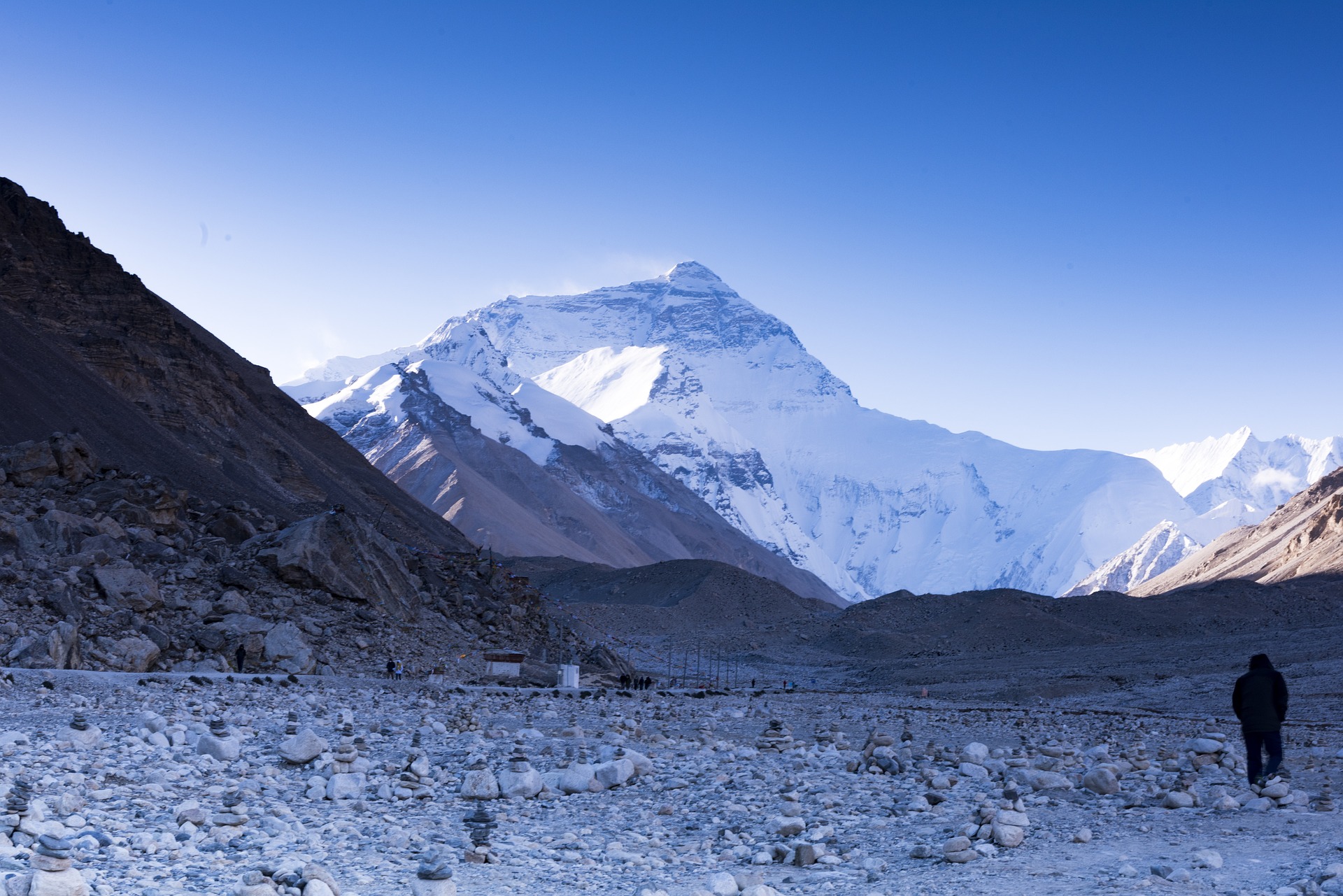
Are there are other Nepal trekking routes?
If the Kanchenjunga Base Camp Trek isn't your cup of tea, you can always try your hand at the Everest Base Camp hike , the Langtang Valley hike or the Manaslu Circuit hike . These treks are considered some of the best hikes in Nepal .
Continue browsing
See more information on Nepal . Or check out these other Nepal hiking articles:
- Short Treks in Nepal
- Easy Hikes in Nepal
- Food and Water on Everest Treks
- Royal Trail
- Kala Patthar Trekking Guide
- Rara Lake Hike
- Annapurna Circuit Trail
- Island Peak Climb
- Mera Peak Climb
- Manaslu Circuit Hike
- Helambu Trail
- Mustang Circuit Trek
- Gokyo Lakes Trekking Guide
- Makalu Base Camp Trek
- Gosainkunda Trail
- Limi Valley Hike
About the author
Mark Whitman
Mark has trekked extensively in Asia, Europe, South America and Africa. He founded Mountain IQ in 2014 with the sole aim to be the best online information portal to some of the most popular mountain destinations around the world. When not writing for Mountain IQ, Mark is out exploring the outdoors with his wife!
Leave a Reply
Your email address will not be published. Required fields are marked
We work with local guides to offer great value adventures at unbeatable prices
